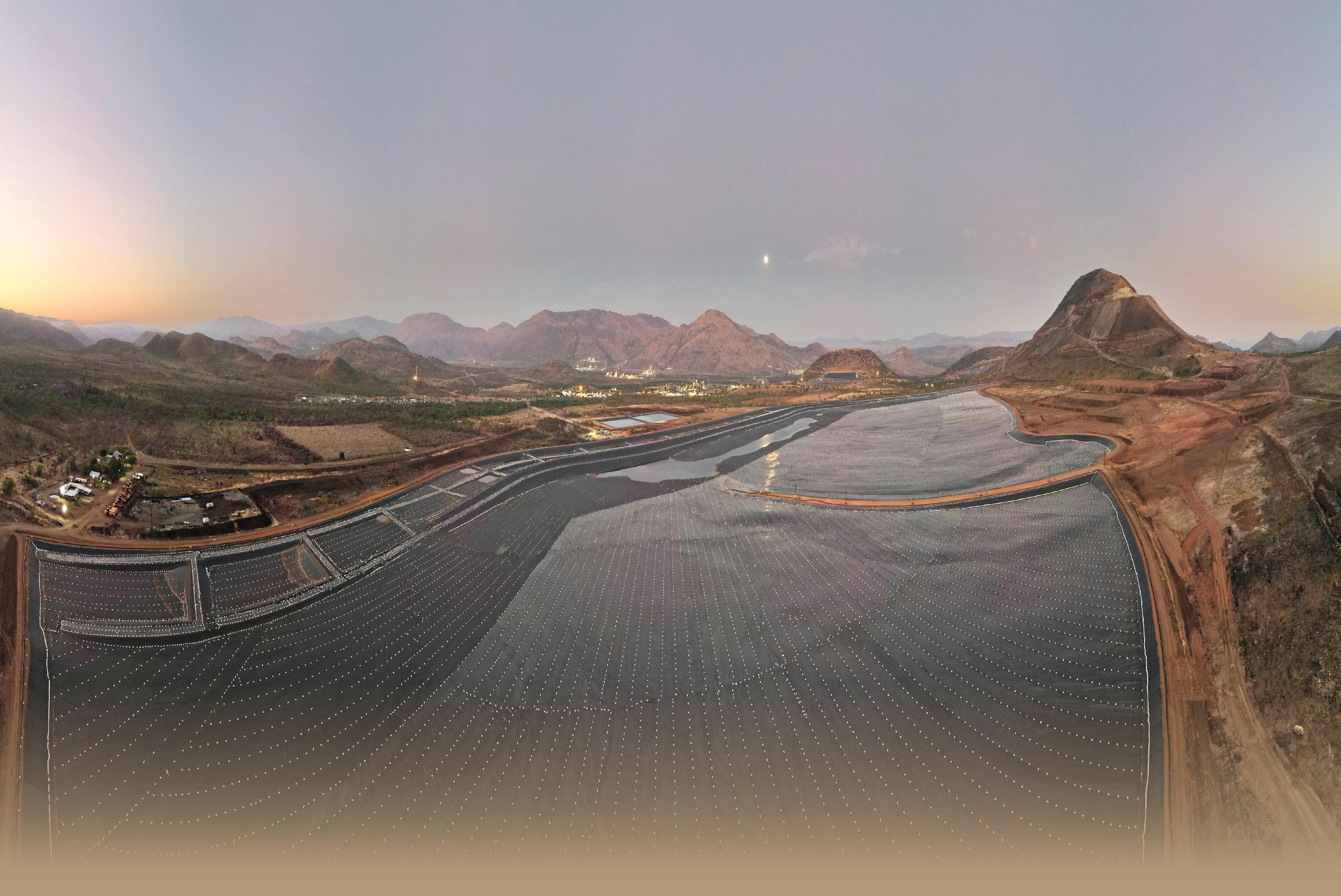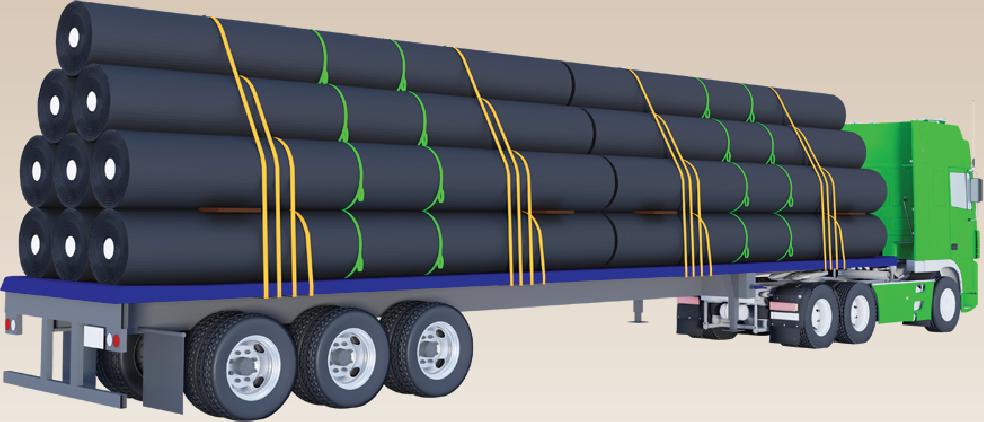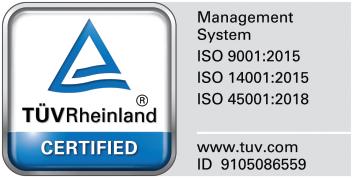




















































































ET-X Projects is a Contractor with value added capabilities in SMPP and EC&I construction, engineering through partners, repair and refurbishment, maintenance, civils and associated interface and project management.
The Company specialises in projects in the Mining, Power, Port, Water, Oil & Gas, Infrastructure, FMCG and Industrial sectors.
ET-X Projects has evolved from the retained construction expertise of ELB Construction and the Intellectual Property of ELB Engineering Services into the dynamic business of today.
Cell: +27 76 283 1682
ET-X Projects (Pty) Ltd (ET-X) combines the history of ELB Construction with a new vibrant energy and together with the retained knowledge of its key executives, provides a platform to deliver successful projects. We have adapted to meet the demands of the ever-changing market whilst being guided by strong leadership with ethics and integrity. These principles continue to form the core of our business today as we progress and mentor tomorrow’s leaders. Over the years we have amassed the experience, skills, knowledge and partnerships needed to construct any size project.

We are a level 1 B-BBEE contributor, have a level 9ME CIDB grading and are accredited in ISO3834, ISO9001 and ISO45001 Quality Safety and Welding certifications. Our knowledgeable, specialised project execution and support teams enable us to be a reliable contractor with value added capabilities. Our fleet of self-owned plant and equipment allows us to act swiftly and manage costs appropriately.
We believe that establishing relationships with trustworthy partners guarantees the successful outcome of any project as it will overcome typical construction complexities and constraints. We have a “Can Do” attitude towards our client’s needs and expectations and are known for our ability to adapt to any challenges that are presented and manage it all with our One Stop Solution approach.
We have a dynamic approach and are committed to a sustainable Health, Safety and Environmental culture within our business and continuously drive “Safety Campaigns and Awareness”. Our employees are the backbone of our business, and we cherish the trust and responsibility we assign to all our ambassadors. We believe in doing the right thing, even when no one is watching.

Cell: +27 82 090 4592
Recent projects that we have successfully completed and are proud of include:
• Refurbishment of Electrostatic Precipitators including repairs on platework, mechanical equipment, hot and cold commissioning.
• Erection and installation of stainless-steel tanks with onsite welding and hydrostatic leak testing.
• Erection and commissioning of a complete Zinc Concentrator plant. This led to the design and installation of an additional filter press and Zinc cleaner expansion module.
• Erection and commissioning of a 27km single flight overland conveyor, 2 surface bunkers including all ancillary conveyors.
• Construction of coal feed, course ash and overland conveyors and installation of the emergency stacking and reclaim machines and its relevant conveyors.
expertise include the erection / construction / installation / maintenance of:
• Dense Medium Separation Plants;
• Bulk Material Train Load Out Stations;
• Coal and Dust Handling Plant systems at various Power Stations;
• Leach Vats.
Our Aftermarket Services and Spare Parts Division provides a comprehensive spare parts and maintenance service facility. This relates to all equipment pertaining to bulk materials handling, industrial projects, minerals processing plants and other relevant industries, including the legacy equipment supplied in the past by ELB Engineering Services. Contact or email info@et-x.co.za +27 11 772 1548 www.et-xprojects.co.za






What began in a modest garage in 2005 has evolved into one of South Africa’s most dynamic and influential black-owned business conglomerates.
Celebrating 20 years of resilience, transformation and purpose-driven growth, the SSC Group—under the visionary leadership of founder and CEO Fred Arendse—stands today as a testament to the power of inclusive capitalism, integrity and grit.

12 TEAM MESSAGE
Junior miners: Reviving South Africa’s mining future
14 EVENTS
Conferences and meetings for the African mining industry

For us it’s no problem.








































From large stones to the smallest grains: Bulk solids come in all types, shapes and sizes, but choosing the right measurement technology is surprisingly easy. With our level and pressure sensors, you can effortlessly keep an eye on all your important process values – and still have time to crack the really hard rocks. Everything is possible. With VEGA.
28 IN FOCUS
Natural resources and local enthusiasm will uplift tribal economies
34 NEW DEVELOPMENTS
Seriti Resources’ newly opened Naudesbank Colliery aims to drive economic growth and strengthen South Africa’s coal mining sector
40 ECONOMY
Green infrastructure and jobs: South Africa’s plan for a brighter economic future
46 INTERNATIONAL NEWS
What’s so special about Ukraine’s minerals? A geologist explains
52 REGULATORY
Local content development in Africa’s energy sector: Challenges, opportunities and best practices
58 ESG
A giant freshwater aquifer in southern Africa is under threat from mining. Two groundwater scientists explain the environmental dangers
64 CLEAN ENERGY
Green hydrogen is a clean fuel, but South Africa is not ready to produce it. Energy experts explain why



Energy Leaders
Global Reach. Local Precision.

Leadership Assessment
Measuring Leadership with a Sustainability Lens
Executive Development
Optimising Organisational Performance
Employer Branding Strategies
With Global Industry-Specific Insights
Executive Search


Securing High-Impact Leaders for Long-term Success






70 RENEWABLE ENERGY
The future of Africa’s energy sector: Balancing fossil fuels and renewables
76 CRITICAL MINERALS
Why deep seabed mining is bad for biodiversity and terrible for the economy
84 OIL
South Africa’s new National Petroleum Company signals a shift in African energy governance
90 GAS
The GECF’s 9th edition of the Global Gas Outlook 2050 explores key trends and developments in Africa’s natural gas market
96 TECHNOLOGY
Mining must become more responsible and sustainable—where hi-tech solutions fit in
102 WOMEN
A holistic approach to personal protective equipment is needed to close the mining gender gap
106 SOCIAL DEVELOPMENT
Green energy doesn’t benefit everyone: Ubuntu ideas can help include more people
112 GOOD READS
The latest books to help you succeed in business



Today, as South Africa’s mining sector grapples with ageing infrastructure, declining ore grades and global shifts toward sustainable practices, the future may very well rest in the hands of the junior miners: the smaller, agile companies that are redefining what’s possible in this storied sector.
These firms operate under constraints that would cripple larger corporations: tighter capital, limited access to infrastructure and regulatory hurdles that often seem insurmountable. And yet, they persist.
South Africa’s policy environment, however, has not always been conducive to the growth of junior miners. Uncertain regulations, delays in the issuance of prospecting rights and limited access to exploration financing have stifled growth and deterred investment.
If the country’s serious about reviving its mining sector, it must place junior miners at the centre of that strategy. Streamlining the permitting process, creating dedicated financing vehicles—such as state-backed exploration funds—and improving geological data transparency are all critical steps. Encouraging partnerships between juniors and majors could also accelerate project development while spreading risk.
Additionally, junior miners can play a pivotal role in the country’s transition to a green economy. Critical minerals like lithium and rare earths—all essential for renewable energy technologies—are being targeted by juniors willing to explore beyond the conventional.
In many ways, junior miners represent the entrepreneurial spirit and resilience South Africa needs to inject back into its mining industry. By supporting their growth, the country can not only revive its mining future but also ensure it’s more inclusive, sustainable and aligned with the needs of a rapidly changing world.
The question, then, isn’t whether junior miners matter— they clearly do. The real question is whether South Africa will give them the space and support to thrive.
That’s why events such as the Junior Indaba are so essential. It’s here where junior miners can discuss the challenges of, and opportunities for, junior mining and exploration in South Africa and elsewhere in Africa.


Welcome to the future.

mining news



PUBLISHER: Donovan Abrahams
MANAGING EDITOR: Tania Griffin
DESIGN: Erin Esau
EDITORIAL SOURCES: TheConversation.com, GECF, Kgosi Pilane, Teboho Makhabane, DMRE, SANPC, African Energy Week, Sisi Safety Wear
IMAGES: iStockPhoto, WIkimedia Commons
PROJECT MANAGER: Viwe Ncapai
ADVERTISING EXECUTIVES: Viwe Ncapai, Lunga Ziwele, Andre Evans
ONLINE CO-ORDINATOR: Tharwuah Slemang
IT & SOCIAL MEDIA: Tharwuah Slemang
CLIENT LIAISON: Majdah Rogers
ACCOUNTS: Benita Abrahams, Bianca Alfos
HUMAN RESOURCES MANAGER: Colin Samuels
PRINTER: Novus Print
DISTRIBUTION: www.africanminingnews.co.za, www.issuu.com
DIRECTORS: Donovan Abrahams, Colin Samuels
PUBLISHED BY: Aveng Media
Boland Bank Building, 5th Floor 18 Lower Burg Street Cape Town, 8000

Tel: 021 418 3090
Fax: 021 418 3064
Email: reception@avengmedia.co.za
Website: www.avengmedia.co.za
DISCLAIMER:
© 2025 African Mining News magazine is published by Aveng Media (Pty) Ltd. The Publisher and Editor are not responsible for any unsolicited material. All information correct at time of print.
Rub shoulders and conduct business with the high-flyers in the African mining industry
Mining in Motion 2 to 4 June
Kempinski Hotel, Gold Coast City, Ghana mininginmotionsummit.com
As a premier platform for discussions on responsible mining, sustainability and the formalisation of artisanal and small-scale mining (ASM) across Africa, this summit will welcome key mining nations in Africa and global industry leaders. Under the theme, “Sustainable Mining & Local Growth—Leveraging Resources for Global Impact”, it aims to promote responsible and innovative ASM practices, policy reforms and international collaboration in Ghana.
DRC Mining Week 11 to 13 June
Pullman Lubumbashi
Grand Karavia Hotel, DRC wearevuka.com/mining/drc-mining-week From cutting-edge machinery to game-changing digital tools, this is where the future of mining comes alive. DRC Mining Week is a pivotal conference and exhibition focused on Africa’s mining transition, where industry leaders and innovators come together to explore trends, technologies and strategies shaping the future of the industry. The 2025 conference, crafted by leading figures and industry experts, will deliver exceptional insights and create invaluable opportunities for all attendees to collaborate and shape the future of mining.
2025 London Indaba 24 & 25 June
InterContinental Park Lane, London www.londonindaba.com
This year’s London Indaba will bring together senior level representatives from multiple stakeholders including governments, mining houses, financial and investment institutions, legal and advisory experts to discuss the centrality of Africa in the race for the minerals and metals of the future. It will explore the critical role African countries must
play in providing many of the minerals and metals the world needs for the future, and the all-important question of where investment will come from and what international stakeholders and investors are looking for when investing in and partnering with African mining companies and jurisdictions.
25 & 26 June
Glenburn Lodge & Spa, Muldersdrift, Johannesburg, South Africa
www.saimm.co.za
The mining industry, along with the mining value chain, is seeking to take advantage of digital opportunities in the quest for competitiveness, sustainability and zero harm. Mining businesses in Africa, as globally, are on this journey purposefully or by default. This event adds to purpose by being a showcase and learning experience. Learn about global best practices and network with global leaders in mining and other businesses.
2 to 4 July
Avani Pemba Beach Hotel, Cabo Delgado, Mozambique mozambique-ei.com
The Mozambique Energy & Industry Summit, known globally as MEIS, is held at the heart of Mozambique’s significant natural gas discoveries, particularly in the Rovuma Basin. These gas reserves are among the largest in the world, positioning Mozambique as a key player in global energy markets. Attending MEIS in Mozambique’s energy nucleus has provided attendees direct opportunity to learn firsthand about the region’s energy future, major projects and the potential for further exploration and development.
MINEXPO KENYA 2025
16 to 18 July
Kenyatta International Convention Centre, Nairobi, Kenya www.expogr.com/kenyaminexpo
MINEXPO KENYA is the only international mining exhibition in the region that presents the widest range of the latest technology in the mining and processing of the minerals industry. The event presents the latest technology and machinery in mineral extraction, earthmoving, safety equipment and much more. The exhibition provides a common platform for both local and international exhibitors, professionals, buyers and delegates who share a common outlook in the industry.
Afrirock 2025
21 to 25 July
Sun City, Rustenburg, South Africa www.saimm.co.za
Rock engineering design plays a crucial role in advancing mining operations across the continent. The conference will spotlight cutting-edge technologies such as modern geotechnical data collection techniques, 3D visualisation software for geotechnical analysis, computer modelling, mechanisation and more. Technical visits will provide attendees with firsthand practical knowledge of South African mines.
Mining Expo & Conference Namibia 2025
5 to 7 August
Windhoek Showgrounds, Namibia miningexponamibia.com
This event, organised by the Chamber of Mines Namibia, will showcase the latest advancements, technologies and innovations in the country’s mining industry—bringing together professionals, exhibitors and stakeholders from around the globe. There will be three days of business-to-business networking, marketing of products and services, and additional platforms such as the Suppliers’ Platform and the conference.







SSC GROUP: 20 YEARS OF GROWING TOGETHER




In the complex and often unyielding terrain of the African mining industry, few stories resonate as deeply as that of SSC Group. What began in a modest garage in 2005 has evolved into one of South Africa’s most dynamic and influential black-owned business conglomerates.
Celebrating 20 years of resilience, transformation and purpose-driven growth, the SSC Group—under the visionary leadership of founder and CEO Fred Arendse—stands today as a testament to the power of inclusive capitalism, integrity and grit.
Humble beginnings: Building from the ground up Arendse’s journey is both remarkable and deeply symbolic of the entrepreneurial spirit that defines post-apartheid South Africa. With no external
investors and only his Anglo Platinum pension payout as capital, he transformed a personal leap of faith into a corporation that now spans multiple sectors, all rooted in servicing and innovating within the mining value chain.
The full name Siyakhula Sonke Empowerment Corporation, derived from the Zulu phrase “together we grow”, reflects both the ethos and operational model of the group. From day one, SSC was a mission, more so than a business. With nothing more than a home office and a vision, Arendse set out to create a black-owned enterprise that was more than just profitable—it had to be purposeful. As Arendse puts it, “It was my vision of establishing a diversified company owned by black shareholders, communities and the workers. I am proud to say that this vision has been the reality of our operations.”



Today, SSC is proudly 100% blackowned, with a majority black-women ownership and a Level 1 BBBEE contributor rating. More than a compliance checkbox, transformation is at the heart of its DNA: a living principle that has guided every business decision for two decades.
development; and renewable energy strategies.
By creating a service model that encompasses everything from technical mining solutions to community engagement, SSC has positioned itself as more than just a contractor; it is a full-service partner and strategic asset to the industry
Industry leadership through expertise and advocacy
The SSC Group’s rise to prominence has not just been about service delivery; it has been about reshaping the mining narrative in South Africa. SSC’s in-house and partner experts bring together over 761 years of combined experience in mining and corporate strategy. This depth of knowledge has enabled the group to not only deliver tangible business results but to do so ethically and inclusively.

The SSC Group operates as a holistic ecosystem, consisting of direct subsidiaries, strategic investments and associate companies. This structural design allows it to deliver an impressive range of services tailored for the mining sector.
These include: contract mining and shaft sinking; specialist underground support and backfilling systems; mine rehabilitation and mining dump reclamation; exploration drilling and mineral evaluation; manufacturing HR outsourcing, stakeholder engagement and transformation consulting; health and safety advisory; digital marketing; chemical cleaning solutions; SMME

But SSC’s impact extends beyond commercial metrics. As a founding member of the Junior Mining Council (JMC), the group has championed the interests of emerging miners. The JMC serves as an essential voice for junior mining companies—often overlooked yet critical to the industry’s long-term health. Through advocacy and support, it promotes ethical practice, innovation and inclusivity, embodying values that mirror

“I want junior miners to have access to opportunities for growth. The JMC is actioning emerging miners to capitalise on mines and companies under care and maintenance.”

— Fred Arendse, Founding President of the JMC
Over two decades, SSC has notched up a series of milestone achievements that highlight its capacity to influence both industry and society:
• COVID-19 response: During the pandemic, SSC stood out by avoiding retrenchments and safeguarding the welfare of its people while continuing operations—a feat few in the industry managed.
• Post-Marikana stability: SSC played a role in stabilising the mining sector in the wake of the Marikana tragedy, offering innovative approaches to worker relations and equitable value sharing.
• Employee share ownership plans (ESOPs): The group has designed model ESOPs for various mining clients, setting new benchmarks for shared value in the sector.
• Ongoing growth: The drilling and manufacturing divisions have expanded steadily, contributing meaningfully to the local economy and mining supply chain.
Each success underscores the group’s strategic agility and its unwavering commitment to stakeholder inclusivity, resilience and empowerment.
For Arendse, being ‘Proudly South African’ is more than a marketing slogan, it is a commitment: a com-mitment to diversity, inclusion and building a better future rooted in the lessons of the past.
As a proud black South African businessman, he sees his company’s achievements as a tribute to those who fought for equality. His work honours the legacy of icons like Nelson Mandela by ensuring mining— one of South Africa’s most historically exploitative industries—becomes a force for justice, empowerment and regeneration.
Arendse’s leadership style is deeply personal and anchored in faith. He attributes all his success—personal and professional—to God, supported un-waveringly by his wife and children. “Without God, none of this would have been possible,” he says.
This humility and spiritual grounding have shaped a corporate culture where ethics, compassion and longterm thinking are not just buzzwords but everyday practice.
The group’s value system has manifested most visibly through the SSC Foundation for Peace and Prosperity. The foundation channels financial and material resources toward a variety of causes, particularly education. From bursaries and scholarships
for underprivileged youth to infrastructure support for schools, SSC’s social investments are helping lay the groundwork for a more equitable South Africa.
Looking ahead: The next chapter in the SSC story
The vision for SSC Group’s next 20 years is no less ambitious than the first. With plans to move from being a service provider to a mine owner and operator, it is targeting strategic acquisitions.
A recent bid for the Beisa Mine signals this pivot towards the diversification of the group’s portfolio and direct mineral investment.
SSC’s existing stake in Beisa, through Neo Metals Pty Ltd, also marks its entry into the uranium ura-nium and gold space—diversifying the portfolio in both product and risk.
This strategy is not just about verti-cal integration or shareholder return. It is about deepening the group’s footprint in South Africa’s economy while ensuring communities, employ-ees and partners benefit from shared ownership.
As SSC Group celebrates its 20th anniversary, Arendse is clear about the legacy he wants to leave behind.
“I want to be remembered for integrity in leadership: making decisions that balanced economic success with social impact and environmental responsibility,” he says.
His vision is of a company that endures beyond his lifetime: a company defined not just by what it extracts from the earth but by what it gives back to it. It is a vision anchored in integrity, driven by people and sustained by innovation.
That legacy is already taking shape. SSC is no longer just a company; it is a blueprint for what ethical, inclusive business can look like in South Africa. From a garage office to boardrooms that shape national mining policy, the journey of SSC is both inspiring and instructive.
In an industry often criticised for its exploitative history, SSC offers a counter-narrative: one where mining becomes a lever for national development, dignity and empowerment. It is mining, not as extraction but as elevation—a source, not just of minerals but of hope.
As SSC Group charts its future, it carries with it a powerful message for Africa’s business community: that you can build big while staying rooted in values; that you can lead boldly without losing your humanity; and that when we say “together we grow”, we mean it.
SSC Group has positioned itself as more than just a contracting company; it is a full-service and strategic partner to the industry

As the African mining, energy, construction and environmental industries evolve amid increasing regulatory scrutiny and global sustainability imperatives, legal expertise tailored to these sectors has never been more critical.
NSDV Law, a firm with deep roots in African business, is at the forefront of helping companies navigate this changing landscape—ensuring not just compliance but leadership in ESG (environmental, social and governance) priorities and sustainable business practices.
From advising on mergers and acquisitions (M&As) in a climate of renewed international interest in Africa’s resources, to supporting clients with responsible environmental and operational strategies, NSDV Law plays a pivotal role in shaping what responsible business looks like on the continent today.

NSDV Law plays a pivotal role in shaping what responsible business looks like on the continent today


South Africa remains one of the most highly regulated jurisdictions in the world, particularly in sectors such as energy, construction, mining and environmental. This regulatory intensity has increased in recent years, with the implementation of legislation such as the Climate Change Act, 2024 and key amendments to the National Environmental Management Act, 1998.
These developments demand a strategic legal approach, and NSDV Law ensures its clients not only meet the minimum requirements but also understand the broader implications for their operations and long-term sustainability.
In construction, compliance is not just about ticking legal boxes—it is a matter of life and death. The tragic building collapse in George, Western Cape highlighted how breaches of occupational health and safety regulations, substandard material use and failed inspections can lead to catastrophic consequences.
NSDV Law emphasises strict compliance in such sectors and advises clients on how to build resilient frameworks that uphold the highest standards of safety and accountability.
Africa’s mining sector is currently experiencing a surge in mergers and acquisitions: a ‘neo-scramble’ for resources, spurred by the global demand for gold and critical minerals essential to defence, aerospace and the green economy. International powers including the European Union, United States, United Kingdom and China are significantly increasing their in-
NSDV Law emphasises strict compliance and advises clients on how to build resilient frameworks that uphold the highest standards of safety and accountability.
vestments in African mining and associated infrastructure in a bid to secure mineral supply chains.
NSDV Law provides critical legal and strategic advice to companies engaging in this fast-paced M&A environment. This includes due diligence, regulatory compliance, risk mitigation and stakeholder alignment—key ingredients for successful transactions.
An example is the recent investment by First Quantum Minerals in Prospect Resources to advance Zambia’s Mumbezhi Copper Project, illustrating how major miners are leveraging proximity and strategic alignment in their expansion efforts.
Notably, new players are entering the mining sector: not traditional mining companies but businesses seeking to secure long-term supplies of critical materials essential to their own industries. NSDV Law helps these companies navigate unfamiliar regulatory terrain, ensuring their investments are sound, sustainable and legally protected.
Today’s investors are increasingly ESG-conscious, looking to back businesses that demonstrate a clear commitment to environmental stewardship, social responsibility and robust governance. In sectors like mining, energy and construction—where operations significantly impact communities and ecosystems—this commitment is both a responsibility and a competitive advantage.
NSDV Law understands this dual imperative. The firm supports clients in embedding ESG into core business strategy—moving beyond compliance to best practice. Whether it is advising
on efficient water use in mining operations, developing renewable energy solutions to mitigate loadshedding, or guiding companies through stakeholder engagement processes, NSDV Law ensures ESG is integrated into every aspect of the business.
Access to sustainable energy is a particularly pressing issue in African mining. Inconsistent power supply can halt production, derail timelines and erode investor confidence. NSDV Law works with clients to identify and implement alternative energy strategies such as solar power, which not only guarantee energy security but also reduce environmental impact.
Water use, too, is a major concern— especially in regions prone to drought or water scarcity. Mines must manage their water use efficiently to ensure both operational continuity and community well-being. NSDV Law’s guidance helps clients strike this balance, ensuring legal compliance and longterm sustainability.
For NSDV Law, responsible business is about more than simply meeting the legal minimum. It means ‘going beyond compliance’ to align with international standards and demonstrate a commitment to doing good— both for business and society.
One area where this approach is especially important is tailings management. Improper handling of mining waste can have devastating environmental and social consequences. NSDV Law helps clients align with the Global Industry Standard on Tailings Management, ensuring their practices reflect not only regulatory requirements but global best practices.
The firm’s broader philosophy of responsible business includes offering strategic counsel to align business goals with societal needs. Whether

that is through advising on community development initiatives, supporting local employment strategies or implementing inclusive governance structures, NSDV Law empowers its clients to build trust and foster longterm value.
NSDV Law does not simply provide legal advice; it serves as a strategic partner to companies building Africa’s future. The firm’s deep knowledge of the continent’s regulatory environments, cultural landscapes and economic dynamics enables it to deliver solutions that are both legally sound and commercially strategic.
In a region where legal complexity and opportunity go hand in hand, NSDV Law ensures its clients are equipped to navigate risks, seize opportunities and lead with integrity. Whether it is advising on a cross-border acquisition, implementing a climate-resilient energy strategy or strengthening ESG governance, NSDV’s support is grounded in a holistic, forward-looking approach.
As Africa continues to attract global investment and drive innovation in resource-based industries, the need for robust, responsive and responsible legal guidance has never been greater. NSDV Law is meeting this moment with expertise, insight and a commitment to helping its clients not only comply—but thrive.


Natural resources and local enthusiasm will uplift tribal economies
We must and will take a proactive role in mining ventures, from equity stakes to operational partnerships.
For the Bakgatla tribe, anchored on the Platinum Belt of the North West Province, the question is not whether prosperity is possible—it is how we seize it with both hands. And this is not just empty rhetoric, either: South Africa is host to 88% of the world’s platinum market share, and much of that is to be found in the Platinum Belt.
Armed with that powerful statistic, our tribe stands at the intersection of opportunity and ambition, with the potential to redefine what it means to be a rural economic powerhouse.
Mining has long been the backbone of the South African economy, but for too long, the potential benefits of this industry—and other, downstream industries—have eluded tribal communities upon which these activities take place.
The Bakgatla, however, are poised and ready to change that narrative.
We must and will take a proactive role in mining ventures, from equity stakes to operational partnerships. In so doing, we can ensure the profits do not just trickle down, but flow directly and regularly into active community development. This means that, among other initiatives, we must establish community trusts that manage revenue transparently, and create clear and ring-fenced allocations for infrastructure, education, healthcare and entrepreneurial support.
The wealth that slumbers beneath our feet is not just a resource—it is a responsibility. The key lies in strategically and profitably leveraging our natural resources to fund projects that enrich and sustain our people.
Imagine, if you will, communities no longer shackled by dependency but thriving through self-sufficiency. Imagine the ripple effects of economic activities spreading from our villages to the provincial and even national economy. This is not some academic and unattainable utopia, however. It is entirely possible—with the right strategies, unwavering commitment and ethical and competent governance.
In our zeal to exploit our region’s mineral bounty, we must, of course,
not throw out the proverbial baby with the bathwater. We must ensure, for example, mining operations are carried out with a constant eye for environmental impact: on human settlements as well as on water and arable land, and the aesthetic appeal of our land.
The ripple effect of our newfound prosperity would be thunderous: Mining profits that are carefully invested in modern schools would produce educated youth who could return as doctors, engineers and business leaders. In short, we would have a prosperous, positively inclined and forward-looking community. Better roads and utilities (in short, an aesthetic ‘facelift’) would attract investors who would be eager to establish their businesses in a region that wears its potential proudly on its sleeve.
This cyclical growth would transform not just the tribe but the entire North West Province.
Don’t get me wrong, however. I do not believe any country or community can put all its eggs in one basket. Diversification, after all, is the cornerstone of economic resilience.
The Bakgatla territory is a jewel not only for its minerals but also for its breathtaking landscapes, rich cul-
tural heritage and biodiversity. In recent years, the Bakgatla tribe has uncovered the benefits to be found in ecotourism, cultural heritage sites and adventure tourism. These initiatives can create jobs, promote local crafts and generate sustainable revenue streams. By developing lodges, cultural centres and guided tours, we can attract both domestic and international tourists who are eager to experience our authentic South African heritage.
Agriculture is another vital pillar of our local economy. The fertile lands of our region can support both subsistence and commercial farming and— by investing in modern agricultural techniques, irrigation systems and value-added processing facilities—we can turn our agricultural sector into a robust contributor to food security and economic growth.
All these growth initiatives must be firmly rooted in the bedrock of education, both at school level and beyond. We must invest in vocational training, entrepreneurship programmes and scholarships that equip our people with the skills needed in mining, tourism, agriculture and beyond. After all, empowered individuals create empowered communities.
So, how do we attain all these lofty ideals?
It begins with visionary leadership and community involvement. The tribe must establish clear governance structures that promote transparency, accountability and inclusive decision-making. We must also forge partnerships with private investors, government agencies and development organisations that are able to provide the expertise, funding and networks required to kickstart and maintain projects.
Importantly, capacity-building within the community ensures we have the skills to manage and sustain these initiatives. Again: education, education, education.
By leveraging our resources strategically, the Bakgatla tribe can become a beacon of what is possible when rural communities take charge of their destinies. We can crush that stereotype of rural areas being stunted com-
Our contribution to the North West provincial economy will be undeniable, and our impact on the national stage will be profound.
I must assure you that my words are not just a fanciful dream—they are a call to action. The time is ripe for us to escalate from dreaming to doing; to transform our mindsets, landscapes, economies and futures. The sky is not the limit; it’s merely our starting point.
We must ensure mining operations are carried out with a constant eye for environmental impact






Seriti’s newly opened Naudesbank
Colliery aims to drive economic growth and strengthen South Africa’s coal mining sector
On 14 March this year, Seriti Resources official opened its new Naudesbank Colliery: a strategic new mining development that underscores the company’s commitment to economic growth, job creation and responsible mining in South Africa.
The Naudesbank Colliery is strategically located in Carolina, within the Chief Albert Luthuli Local Municipality in the Mpumalanga Province—a region rich in coal resources—and is poised to make a significant contribution to the country’s coal sector and the local economy.
As a long-life, export-orientated mining project, Naudesbank Colliery is set to generate around 300 direct jobs, with additional indirect and downstream employment opportunities in the surrounding communities, contributing to the region’s economic development and social upliftment. The company has actively engaged with local communities throughout the project’s development phase and will continue to prioritise community partnerships and initiatives to ensure meaningful shared value.
The Naudesbank Colliery “not only promises to enhance the local economic activity but reinforce our assertion that mining is a sunrise industry that is ready to bolster South Africa’s economy for years to come,” said Minister of Mineral and Petroleum Resources Gwede Mantashe at the official opening.
“The study on the state of mining in South Africa further confirms the South African mining industry is not a sunset industry, but an industry that
is diversifying from the gold era to an industry with a diverse range of mineral resources including, but not limited to, coal, PGMs [platinum group metals], manganese, chrome and rare earth minerals.
“The study shows that coal will continue to play an important role, as it makes up the largest share of baseload energy generated in developing and developed nations such as South Africa, China, India and Japan. Despite the fact that South Africa has proven reserves of coal that are equivalent to 173 times its annual consumption, the study further shows that at the current production rate, the operational collieries in South Africa should have more than 50 years of coal supply left.”
He continued, “In 2023 alone, the coal mining sector increased its production from 230 million tonnes in 2022 to 232 million tonnes and thereby positioned South Africa in the top 10 of coal-producing nations and the fifth largest coal exporter in the world.”
“By investing in the coal mining, and opening this mine, [Seriti is] practically demonstrating that ‘king coal’ is back, and that coal will continue to play a significant role not only in energy generation but in cement production, steel making and the production of synthetic petroleumbased fuels.”
The minister noted that although the country’s gross domestic product expanded by 0.6% in the fourth quarter of 2024, Statistics South Africa had reported that mining activity was down on weaker production levels for
Our investment in Naudesbank bears testament to our firm belief in the future of responsible mining and its role in driving economic progress and shared value.
manganese ore, iron ore, gold, chromium ore, nickel and copper. Coal and PGMs were positive; however, this was not enough to prevent the South African mining industry from going under, hence the -0.2% contribution to GDP.
In addition, in 2024 the South African mining industry employed 484 837 mineworkers, marking a significant decrease of 0.9% from the previous year.
“Changing this reality for the better will require all social partners— government, business, labour and communities—to put shoulder to the wheel and make it possible to do business in South Africa, including opening new mines and thereby create the much-needed employment opportunities.
“It is within this context that we are particularly pleased with the new sizeable investments that cut across the South African mining value chain,” Mantashe stated.
Seriti has invested over R500 million in the development of the Naudesbank Colliery, including infra-

structure projects that will not only support mining activities but also deliver benefits to local communities. The mine is expected to contribute significantly to South Africa’s mining sector and play a key role in the country’s economic growth.
The Naudesbank Colliery holds two separate mining rights, covering Portion 9 and Main Mine. Portion 9 is fully permitted, with opencast mining already underway. Seriti has secured all necessary land for the development of the entire mine complex.
“The opening of Naudesbank Colliery is a milestone for Seriti, Mpumalanga and the country at large,” said Mike Teke, group CEO of Seriti Resources.
“Coal remains a vital component of South Africa’s energy mix and export economy, and this project strengthens our ability to supply high-quality coal while at the same time creating jobs and contributing to the local economy.
“Our investment in Naudesbank bears testament to our firm belief in
the future of responsible mining and its role in driving economic progress and shared value.”
Minister Mantashe commented that another encouraging fact about this project, and the coal sector in general, is that it is predominantly black-owned, which augurs well for the mining industry’s transformation agenda.
“We are encouraged by the increased participation of historically disadvantaged individuals in the industry, in particular black people in general, women and youth. The study on the state of mining in South Africa shows that by 2022, the South African coal mining sector employed nearly 91 835 mineworkers, of which 15 140 (20%) were female. We need to see more women and the youth participating in the industry, as they are the hardest hit by the scourge of unemployment, poverty and inequality.”
Another key element of the transformation agenda, said Mantashe, is increased investments in the social
and economic welfare of the communities in which mines are operating, as well as the labour-sending areas.
“It is encouraging that mining companies are beginning to implement impactful projects such as clinics, schools and road infrastructure in our communities as part of their Social and Labour Plans (SLPs). We cannot overemphasise the fact that SLPs are not a replacement for the Municipal Infrastructure Development Plan but a social licence for mining companies to co-exist with their communities.”
In closing, he stated: “Let me congratulate Seriti for officially opening this mine—and urge you to open more mines!”
It is poised to make a significant contribution to the country’s coal sector and the local economy


Green infrastructure and jobs: South Africa’s plan for a brighter economic future

In the face of South Africa’s high unemployment rate—hovering around 34%—and the growing urgency to combat climate change, the country finds itself at a crossroads.
The solution may lie in an often overlooked but increasingly vital sector: green jobs. As global focus shifts toward environmental sustainability and resilience to climate change, South Africa has a unique opportunity to capitalise on green industries, creating millions of jobs that not only address pressing environmental challenges but also stimulate economic growth.
Green jobs encompass a broad range of employment opportunities linked to sustainability and environmental responsibility. These include positions in renewable energy (solar, wind and hydroelectric power), green infrastructure development (energy-efficient buildings, sustainable urban planning), waste-to-energy technologies, water conservation and biodiversity protection.
Each of these sectors not only helps mitigate the country’s carbon footprint but also creates long-term job prospects in areas where unemployment is critically high.
For instance, South Africa’s ambitious renewable energy goals have already started to create employment.
Green jobs encompass a broad range of employment opportunities linked to sustainability and environmental responsibility.
According to the Renewable Energy Independent Power Producer Procurement Programme, South Africa has already created thousands of direct and indirect jobs in the renewable energy sector: from project managers and engineers to electricians, maintenance crews and administrative staff.
Projects like the development of large-scale wind and solar farms in rural provinces are not only helping to meet the country’s energy needs but are providing jobs in communities that traditionally rely on coal mining and other fossil fuel industries. The renewable energy sector also offers opportunities for local suppliers and small businesses, further multiplying the economic impact.
Similarly, green infrastructure projects are poised to become a signif-
icant job creator. These projects focus on building sustainable cities, improving energy efficiency in buildings and constructing green spaces.
With a growing focus on urbanisation and sustainable living, there is substantial demand for experts in green building, eco-friendly construction materials and energy-efficient technologies. This is particularly relevant as cities like Johannesburg and Cape Town are working toward implementing sustainable solutions that align with international climate goals.
Waste-to-energy and water conservation: A game-changer
Waste-to-energy (WtE) projects are another area where South Africa has the potential to see substantial growth in green jobs. With waste management

The Afr ican mining sector operates in the most demanding conditions; from the iron-hard rock for mations in the Nor ther n Cape to the mineral-r ich, ar id belts of Namibia, robust, adaptable, and high-perfor ming equipment is essential.
Tempo Equipment and Attachments is a leading manufacturer of custom-designed, high-quality, and durable attachments with decades of exper ience. Operating across var ious sectors, including mining, it has built a strong reputation for deliver ing innovative solutions to combat the continent's most challenging mining conditions. Manufactured in our state-of-the-ar t, 82,000-square-metre European Tempo facility, utilising a combination of global exper tise and advanced technology to create wor ld-class equipment that withstands the test of time
Ever y Tempo product is built on four foundational pr inciples: Innovation, High Quality, Customisation and Durability.
Tempo Equipment and Attachments are built to withstand abrasive conditions, remote locations, and heavy-duty wor kloads. Ever y unit maintains unwaver ing perfor mance, whether breaking through hard rock or operating under extreme temperatures. Each attachment undergoes str ict quality control and is backed up by advanced computer ised engineer ing and controlled manufactur ing processes.
Innovation is at the centre of Tempo Equipment and Attachments Its dedicated Research and Development Depar tment continues to push boundar ies, placing durability, technology, and customer satisfaction at the forefront of product design.

CTC Plant Company is an exclusive Tempo Equipment and Attachments agent, deliver ing super ior engineer ing solutions to mining operations across the Souther n Afr ican region. Through this strategic par tnership, Tempo equips clients with high-perfor mance attachments, including hydraulic hammers and vibrating r ippers, that redefine productivity and safety standards across Afr ica’s mining sector
Tempo understands that no two sites or clients are the same With decades of exper ience in custom-designed equipment manufactur ing, the team specialises in tailored solutions that meet specific project needs Whether facing a unique challenge or seeking improved perfor mance, Tempo delivers the r ight tool for ever y task.
Tempo provides dedicated suppor t at ever y stage, from the initial consultation to after-sales assistance; customers are guided by exper ts who br ing decades of exper ience in mining and ear thmoving equipment Tempo is committed to long-ter m par tnerships to ensure clients not only get the best-fit attachments but also the suppor t needed to maximise uptime and retur ns on investments in the field.






becoming a critical issue in many urban centres, converting waste into usable energy could provide a dual benefit: reducing landfill use and generating electricity.
Companies investing in WtE technology are likely to need skilled workers for plant operations, maintenance, and research and development.
Water conservation is equally pressing, particularly in a country where water scarcity is becoming more pronounced due to climate change. Initiatives that focus on improving water use efficiency, wastewater treatment and the development of new water technologies are essential for the longterm sustainability of the economy.
conservation:
South Africa’s rich biodiversity, which supports tourism and agriculture, is another sector primed for job creation. Biodiversity conservation is increasingly seen as both an economic and environmental necessity.
Protecting ecosystems, managing wildlife reserves and promoting sustainable agriculture practices offer employment opportunities in rural areas, where alternative livelihoods are often scarce.

rates at historically high levels, the urgency for job creation has never been more critical. By supporting industries that are aligned with South Africa’s environmental goals, we can position ourselves as a leader in green innovation while addressing its social and economic challenges.
Sanlam Investments (www.sanlaminvestments.com) is committed to investing in the future. It has funds dedicated to the infrastructure required to preserve our precious natural resources and uncap their limitless potential, to the betterment of our country and people for generations to come.
Teboho Makhabane Head: ESG and Impact Sanlam Investments

Additionally, carbon offset projects that promote forest regeneration and sustainable land management can generate further employment while contributing to global climate goals.
A paradigm shift for South Africa’s workforce

By prioritising green industries, South Africa has the power to ignite a new wave of job creation that not only contributes to economic growth but also strengthens the nation’s resilience to climate change. With unemployment


South Africa›s ambitious renewable energy goals have already started to create employment




The US and Ukraine have signed an ‘economic partnership’ centred on Ukraine’s wealth of critical minerals—but extracting them isn’t so simple
The United States and Ukraine have a new “economic partnership” (tinyurl. com/ynntem73) centred on Ukraine’s mineral wealth as Ukraine continues to fight off Russia’s invasion, officials from both countries announced on 30 April this year.
After a rocky start to negotiations, US Treasury Secretary Scott Bessent said the two countries had signed an agreement “to work collaboratively and invest together to ensure that our mutual assets, talents and capabilities can accelerate Ukraine’s economic re-
Here’s what we know:
Ukraine’s minerals fuel industries and militaries Ukraine’s mineral resources are concentrated in two geologic provinces (tinyurl.com/4pdzwnk5). The larger of these, known as the Ukrainian Shield, is a wide belt running through the centre of the country, from the northwest to the southeast. It consists of very old, metamorphic and granitic rocks. A multibillion-year history of fault movement and volcanic activity created a diversity of minerals concentrated in local sites and across some larger regions.
A second province, close to Ukraine’s border with Russia in the east, includes a rift basin known as the Dnipro-Donets Depression. It is filled with sedimentary rocks containing coal, oil and natural gas.
Before Ukraine’s independence in 1991, both areas supplied the Soviet Union with materials for its industrialisation and military. A massive industrial area centred on steelmaking grew in the southeast, where iron, manganese and coal are especially plentiful.
By the 2000s, Ukraine was a significant producer and exporter of these and other minerals (tinyurl.com/ bddjbdwr). It also mines uranium, used for nuclear power (tinyurl.com/ mwbxyhfh).
In addition, Soviet and Ukrainian geoscientists identified deposits of lithium and rare earth metals that remain undeveloped. However, technical reports suggest
covery.” He described the agreement and establishment of the US–Ukraine Reconstruction Investment Fund as an “economic partnership.”
The fund, to be financed with 50% of the royalties and fees from new licences for critical materials, oil and gas extraction (tinyurl. com/325a932v), creates a strategic alignment between the two countries as the war continues. It includes provisions for US access to minerals, and states that US military equipment sent to Ukraine in the future could count as US contributions to the fund.
There is no doubt that Ukraine has an abundance of critical minerals, or that these resources will be essential to its postwar reconstruction. But what exactly do those resources include, and how abundant and accessible are they?
The war has severely limited access to data about Ukraine’s natural resources.
However, as a geoscientist with experience in resource evaluation, I have been reading technical reports, many of them behind paywalls, to understand what’s at stake.

assessments of these and some other critical minerals are based on outdated geologic data, that a significant number of mines are inactive due to the war, and that many employ older, inefficient technology.
This suggests critical mineral production could be increased by peacetime foreign investment, and that these minerals could provide even greater value than they do today to whomever controls them.
Critical minerals are defined as resources that are essential to economic or national security and subject to supply risks. They include minerals used in military equipment, computers, batteries and many other products.
A list of 50 critical minerals (tinyurl. com/46hc2495), created by the US Geological Survey, shows that more than a dozen relied upon by the US are abundant in Ukraine. A majority of those are in the Ukrainian Shield, and roughly 20% of Ukraine’s total possible reserves are in areas currently occupied by Russia’s military forces.
Critical minerals Ukraine currently mines
Critical mineral production could be increased by peacetime foreign investment











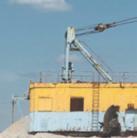









Three critical minerals especially abundant in Ukraine are manganese, titanium and graphite. Between 80% and 100% of US demand for each of these currently comes from foreign imports (tinyurl.com/fzk9mdar).
Manganese is an essential element in steelmaking and batteries. Ukraine is estimated to have the largest total reserves in the world at 2.4 billion tonnes.
However, the deposits are of fairly low grade—only about 11% to 35% of the rock mined is manganese. So it tends to require a lot of material and expensive processing, adding to the total cost.
This is also true for graphite, used in battery electrodes and a variety of industrial applications. Graphite occurs in ore bodies located in the south-central and northwestern portion of the Ukrainian Shield. At least six deposits have been identified there, with an estimated total of 343 million tonnes of ore—18.6 million tonnes of actual graphite.
It is the largest source in Europe and the fifth largest globally (tinyurl. com/kc54fys5).
Titanium, a key metal for aerospace, ship and missile technology, is present in as many as 28 locations in Ukraine, both in hard rock and sand or gravel deposits. The size of the total reserve is confidential, but estimates are commonly in the hundreds of millions of tonnes (tinyurl.com/ mvbspshp).
A number of other critical minerals that are used in semiconductor and battery technologies are less plentiful in Ukraine, but also valuable. Zinc occurs in deposits with other metals such as lead, gold, silver and copper. Gallium and germanium are byprod-

















ucts of other ores—zinc for gallium, lignite coal for germanium. Nickel and cobalt can be found in ultramafic rock, with nickel more abundant.
No figures for Ukraine’s reserves of these elements were available in early 2025, with the exception of zinc, whose reserves have been estimated at around 6.1 million tonnes—putting Ukraine among the top 10 nations for zinc.
Critical minerals that are not being mined—yet Geologists have identified potentially significant volumes in Ukraine of three other types of critical minerals important for energy, military and other uses: lithium, rare earth metals and scandium. None of these had been mined there as of early 2025, though a lithium deposit had been licensed for commercial extraction (ukrlithium.com/project).
The largest potential lithium reserves exist at three sites in the south-central and southeastern Ukrainian Shield, where the grade of ore is considered moderate to good. How much lithium these reserves hold remains confidential, but technical reports suggest it is in the order of 160 million tonnes of ore and 1.6 million to 3 million tonnes of lithium oxide. If most of this could be recovered in a profitable way, it would place Ukraine among the top five nations for lithium.
Smaller volumes of tantalum and niobium, also used in steel alloys and technology, have also been identified in these reserves. Most of Ukraine’s lithium occurs as petalite which, unlike the other main lithium mineral spodumene, requires more expensive processing.
Rare earth elements in Ukraine are known to exist in several sites (tinyurl.com/bdh3wrth) of volcanic origin and in association with uranium in the south-central portion of the Ukrainian Shield. These have not been developed, though sampling has indicated commercial potential in some sites, while other sites appear less viable.
Rare earth elements in high demand for superior magnets and electronics—neodymium, praseodymium, terbium and dysprosium—are all present in varying amounts in these areas. Other critical minerals are associated with these deposits, especially zirconium, tantalum and niobium, in undetermined but potentially significant amounts.
Finally, scandium, used in aluminum alloys for aerospace components, has been identified as a byproduct of processing titanium ores.
Ukraine’s scandium does not appear to have been studied in enough detail to evaluate its commercial potential. However, world production, about 30 to 40 tonnes per year, is forecast to grow rapidly.
It is clear that Ukraine is endowed with valuable resources. However, extracting them will require roads and railways for access, infrastructure such as electricity and mining and processing technology, investment, technical expertise, environmental considerations and, above all, cessation of military conflict.
Those are the true determinants of Ukraine’s mining future.
Munira Raji Research Fellow: Geology University of Plymouth






Local content development in Africa’s energy sector: Challenges, opportunities and best practices
As Africa’s energy sector expands, the need for productive local content policies has become critical for local job creation and value retention. Such policies catalyse growth of nationally owned companies while creating revenue-generating opportunities for local service firms by strengthening their contribution to the industry.
African Energy Week: Invest in African Energies (aecweek.com), taking place from 29 September to 3 October 2025 in Cape Town, will show how well-crafted local content policies have the potential to stimulate local participation, job creation and value retention while standing to improve international partnerships that facilitate the transfer of knowledge, skills and technology.
As Senegal and Mauritania prepare to solidify their position as a major hydrocarbons hub in West Africa—on the back of first liquefied natural gas at the Greater Tortue Ahmeyim (GTA) project in February (tinyurl.com/54rytaup)—the MSGBC region is well-positioned to leverage its extractive industries and enhance local content development.
Senegal’s Local Content Development Fund and National Local Content Monitoring Committee are set to bolster local capacity for training and support for small- and medium-sized enterprises (SMEs), with the objective of achieving a 50% local content ratio by 2030.
To enhance local content amid the start of production at the GTA project, Mauritanian authorities are currently crafting a new local content law. As a partner on the GTA project, upstream oil company Kosmos Energy launched the Mauritania Innovation Challenge (tinyurl.com/4vxhuvk4), which is designed to support entrepreneurs under the age of 40.
Notable beneficiaries from the programme include iMauritanie (imauritanie.com), which works to enhance public administration communication; Sekem (sekem.com), an expert in non-GMO vegetable production; Ayadi Amila, which crafts accessories from recycled materials; and FASEI, which leads local salt processing.
On the back of robust local content policies, mature petroleum producers like Nigeria have seen an increase in local participation within the oil & gas industry.
The Nigerian Oil and Gas Industry Content Development Act mandates the prioritisation of Nigerian products, services and employment. Central to this effort is the Nigerian Content Development and Monitoring Board (ncdmb.gov.ng), which oversees the act and fosters partnerships with industry and educational institutions, aiming to achieve a 70% local content target by 2027.
The National Upstream Local Content Policy showcases Namibia’s dedication to empowering local communities while maintaining a welcoming environment for foreign investment.
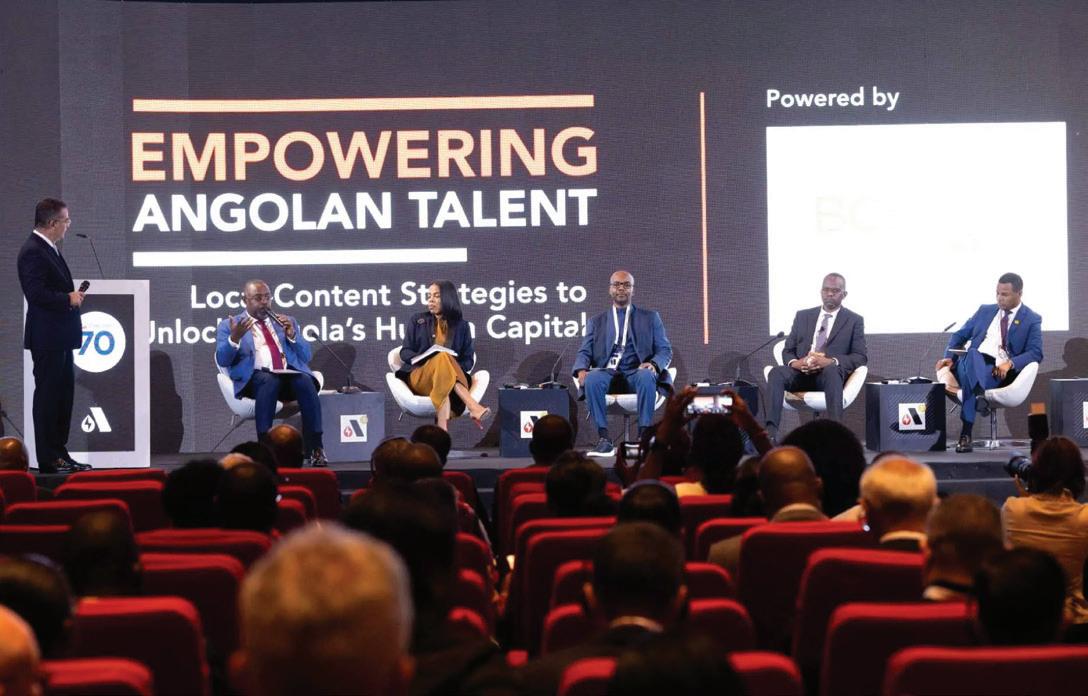

In a significant step for the industry, Namibia recently approved the National Upstream Local Content Policy (tinyurl.com/mshtkdmt). This is set to play a significant role in reducing the country’s dependence on foreign expertise by focusing on the development of local capacity. Aimed at strengthening economic sovereignty and empowering Namibians within the country’s hydrocarbons sector, the policy marks a turning point for the country as it sets its sights on achieving first oil production by 2029.
The National Upstream Local Content Policy showcases Namibia’s dedication to empowering local communities while maintaining a welcoming environment for foreign investment. The policy is designed to balance
the interests of local stakeholders with the needs of international oil companies: a model that other African nations can look to replicate as they expand their own oil and gas exploration and production strategies.
Meanwhile, last October, Angolan service company Associação de Empresas Autóctones para a Indústria de Angola launched an initiative to increase local capacity in the country’s oil & gas sector to 20%. The Action for 20% initiative (tinyurl. com/bddyktuj) serves as a strategy to direct foreign investment to focus on local content by integrating Angolan companies and developing human capital in the country.
With an estimated 98% deficit in terms of local companies operating in the country’s oil & gas sector, improved capacity building is expected to result in oil and
gas production stability while diminishing an over-reliance on the international community to retain production standards.
Ghana’s energy sector is also benefitting from robust local content initiatives driven by the country’s Petroleum Commission. Local content and local participation regulations mandate a minimum 10% equity for Ghanian companies in all projects and establish employment targets for nationals. Meanwhile, the Local Content Fund (petrocom.gov.gh/local-content) provides crucial financial support to enhance the competitiveness of local firms, while the Enterprise Development Center offers essential training, advisory services and market linkages to Ghanian SMEs in the sector.
Local content policies address unique challenges in the African energy sector, including a capital-intensive financing model, a lack of modern technologies and a reliance on highrisk investments over long periods.
Traditionally, the hydrocarbons sector in Africa tends to have a low level of local employment and a heavy reliance on imported goods and services. To counteract this, resolute local content policies ensure African businesses and workers are fully integrated across all levels of the value chain: from exploration and production to service delivery and technology provision.
These policies also provide the opportunity to showcase a stable and transparent regulatory environment in the countries where they are implemented. By ensuring local content requirements are clear and enforceable, such policies are set to attract responsible investment while fostering an atmosphere of trust and co-operation.
start
production at the GTA project, Mauritanian authorities are currently crafting a new local content law.

At Alpha Insure, we recognise that mining is more than just an industr y
– it is the driving force behind an extensive ecosystem of interconnected businesses From the transport and logistics companies that keep supply chains moving to the manufacturers and ser vice providers supporting mining operations, we understand the unique risks and challenges involved.
Our comprehensive insurance solutions are strategically designed to safeguard critical assets, ensure fleet continuity, and enhance operational resilience, providing peace of mind for the entire mining value chain.
Key Insurance Solutions for the Mining Sector Commercial Insurance
We understand the risks faced by businesses within the mining
◦ Tailored Coverage: Customised solutions for equipment suppliers, ser vice providers, and transporters
◦ Liability Protection: Coverage for public liability and employer ’s liability risks
◦ Property and Stock Insurance: Protection for warehouses,
◦ Business Interruption Insurance: Financial security during disruptions, such as natural disasters or supply chain breakdowns
Assets All Risk Insurance
◦ On-Site Protection: Cover against damage, theft, or loss of plant vehicles and machiner y in operation, storage, or transit.
◦ Specialised Equipment Insurance: Comprehensive cover for high-value equipment, such as excavators, loaders, and drilling rigs
◦ Damage Protection: Safeguarding assets against fire, explosion, floods, and other unforeseen events.
◦ Operational Continuity: Rapid claims handling and bespoke risk solutions to minimise downtime
Fleet Insurance
Fleet management in the mining sector demands resilience and
Motor Fleet Specified:
Designed for transporters and logistics companies with medium to large fleets:
◦ Detailed, itemised cover for individual vehicles
◦ Flexibility to adjust coverage as fleets grow or operations shift.
◦ Protection against road risks, theft, and accidental damage
Motor Fleet Unspecified:
A streamlined solution for fleets exceeding 300 vehicles:
◦ Blanket cover for all fleet vehicles, reducing administrative complexity
◦ S calable protection to accommodate operational changes
◦ Comprehensive cover for vehicles on the road or at mining sites
Take the Next Step
Empower your business with industr y-leading insurance solutions from Alpha Insure.
SCAN THE QR CODE
To leave your details and explore how we can protect your assets, mitigate risks, and ensure operational continuity.

A giant freshwater aquifer in southern Africa is under threat from mining. Two groundwater scientists explain the environmental dangers
The combined extraction of oil and gas, uranium leach mining and rare earth heavy metal mining could contaminate the aquifer.
Ahuge underground water resource the size of Austria, the Stampriet Transboundary Aquifer System (tinyurl.com/2s3bc32d), stretches for 87 000km² across Namibia, South Africa and Botswana. It supplies 50 000 people in several towns with water pure enough to drink, and is their only source of water (www.saumanamibia.org).
But the Namibian government has awarded uranium prospecting licences to several mining companies across the aquifer system. Other mining companies already have the right to prospect for rare earth metals in the aquifer.
Surina Esterhuyse and Anton Lukas are groundwater scientists and mining specialists. They say if mining goes ahead, the groundwater may become contaminated by metals that can cause cancer, kidney damage, bone fragility, cardiovascular issues and respiratory problems.
What mining licences have been applied for?
At least seven uranium mining companies have applied to the Namibian government for uranium mining licences. So far, 35 uranium exploration licences have been issued by the Namibian government. These cover 3.3 million hectares of Namibian land and 29% of the 87 000km² area (tinyurl.com/5yrjpfyx). The exploration licences set out the ways the mining companies may explore for minerals, before they start mining.
Each licence is different and is determined by the country issuing it. There is an ongoing battle between the Namibian Department of
Agriculture, Water and Land Reform (tinyurl.com/4ebakp4u) and the mining companies over the exploration licences (tinyurl.com/45vemar4).
The Minister, Carl-Hermann Schlettwein, said in June 2024 (tinyurl.com/yf6p6vpb) that his priority was to make sure the Stampriet Transboundary Aquifer System would not be polluted and would continue to supply clean water in future.
Petroleum
Petroleum exploration licences for shale gas, petroleum and natural gas cover 37% of the aquifer system. Four oil & gas companies have applied for petroleum exploration licences in Namibia and one in Botswana.
Licences to explore have been granted in Namibia for base and rare earth metals across 10% of the aquifer. These metals include tin, lithium, rubidium and tantalum (tinyurl.com/ cruf5bt7).
How could the aquifer be affected by mining?
The combined extraction of oil and gas, uranium leach mining and rare earth heavy metal mining could contaminate the aquifer. This has happened in the boreal zone in Canada (tinyurl.com/4sd8zccz), where 80%
of mining for ferrous metals, precious metals, base metals, oil and gas, and precious gems takes place. Research has found that mine effluents and acid mine drainage have seeped into water resources. The groundwater is also contaminated by heavy metals.
It is difficult to rehabilitate groundwater that is contaminated by different chemicals that have interacted with each other. It becomes nearly impossible to determine how much each mine contributed to the damage and what percentage of the cleanup each mine is responsible for.
Oil and gas: Groundwater pollutants from oil and gas extraction sites could contaminate aquifer systems with saline waters (tinyurl. com/49pszpc6). These pollutants may migrate from surface spillages into shallow aquifers. They can also migrate via leaking production wells to freshwater aquifers.
Base and rare metal mining: Heavy metal pollution is a known cause of groundwater contamination (tinyurl.com/57e9ewtu).
Uranium: In situ uranium leach mining (see diagram overleaf) could contaminate the aquifer system with radioactive leach fluids (tinyurl. com/2uaftrk4). This is because uranium mines drill thousands of boreholes over more than 1 000 hectares.
Sulphuric acid is typically inject-

ed into the aquifer rock that contains the uranium to dissolve it. The mine then pumps out the aquifer water and removes the uranium. The process repeats until economically viable amounts of uranium are exhausted.
At this point, the mine shuts down operations. The wastewater from the operations can be partially recycled at other active uranium well sites, or be injected into deep saline aquifers, or pumped back to an area of the mined aquifer (tinyurl.com/5c5hwr2h), which is what Uranium One proposes (tinyurl. com/4tjdh7dz).
This creates a risk for contaminated groundwater to be drawn to the outside of the mine area, where it can be pumped out by farmers or local communities.
Uranium One believes in “spontaneous neutralisation”: that the minerals in underground rock will neutralise the sulphuric acid (tinyurl. com/mr4xu5w7) and the company will not have to rehabilitate the aquifer. But this kind of natural rehabilitation has not yet been proven (tinyurl.com/56tdsdt5).
How could people in the area be affected by the mining?
With large-scale irrigation projects in Namibia extracting water from the Stampriet aquifer, groundwater can flow from mine areas toward freshwater zones in the aquifer system, potentially contaminating it.
There is no alternative water
source for farmers—and when farmers pump, they may draw out contaminated mine water for irrigation or livestock to drink from without realising it. The consequences to cattle could be inflammation, anaemia and damage to their DNA and organs (tinyurl. com/48senu74). The contaminated water could even unknowingly be consumed by the local communities.
Should mining be allowed?
We are not opposed to mining. Africa needs to profit from its wealth of mineral resources— but not to the detriment of African people in the long term (tinyurl. com/yc766fs2)
The mining planned in the Stampriet aquifer system has not properly considered the overall effect on people and the environment. This is because most environmental impact assessments only focus on the effect of extracting one resource (gold or coal or oil, for example).
Cumulative impact assessments (tinyurl.com/4j3fb2un) have not been conducted in the Stampriet aquifer system, and we believe they should have been.
The Namibian, South African and Botswana governments must co-operate to protect the aquifer system from contamination. Currently, the Stampriet aquifer groundwater is domestically protected in each of the three countries by exploration and mining permit conditions (tinyurl.com/tj3d8tzj). However, mining companies have not always obeyed these. Already, Namibia is facing a devastating drought. The country has needed to cull animals to reduce the load on the country’s water supplies. Mineral exploration places additional stress on the country’s water supplies (tinyurl. com/2u38e3hn)
The Southern African De-
velopment Community must develop legal instruments and a water security plan for this aquifer system. Neglecting the water security in an arid region for short-term gains is extremely concerning.
The governments must also ensure people are not misled into supporting mining when it is to their detriment.
Uranium mining and oil & gas extraction provide very limited job opportunities for local workers. They need specialised skills for operation and maintenance. Most jobs created are for trained technicians and engineers, and not local people.
Finally, the governments of Namibia, Botswana and South Africa must jointly monitor and manage important water resources. They should develop a regional baseline monitoring network to keep an eye on how the water quality is changing.
If the governments cannot co-operate to protect this shared water resource, water disputes and international litigation may happen.
Surina Esterhuyse is a senior lecturer at the Centre for Environmental Management, and Anton Lukas a groundwater modeller and postdoctoral researcher, both at the University of the Free State.







Green hydrogen is a clean fuel, but South Africa is not ready to produce it. Energy experts explain why
Every day, millions of engines and factories burn fossil fuels, releasing carbon dioxide: a greenhouse gas that traps heat in the Earth’s atmosphere and contributes to climate change. Now imagine a clean fuel that does not pollute and produces only water as waste.
That is the promise of green hydrogen, which is made by using solar and wind power to split water into hydrogen and oxygen.
Countries worldwide, including South Africa, see green hydrogen as a vital tool for tackling climate change. There are plans to use green hydrogen in South Africa for everything from producing fertiliser for farms to powering factories and heavy trucks (tinyurl.com/4ed2kcsd)
As governments worldwide push for green hydrogen as a clean energy solution, a critical reality is being overlooked: producing green hydrogen is only one piece of a complex puzzle. The success of green hydrogen projects depends on simultaneously developing infrastructure that will transport the green hydrogen to industry. It will also need industries to adopt new technology or convert existing equipment so that they can switch from using fossil fuels to using green hydrogen.
Producing 1kg of green hydrogen needs up to 30 litres freshwater. Desalination or water-recycling plants would be needed if green hydrogen hubs are set up in water-scarce areas. You would not construct a train station without first laying train tracks
and making sure trains are available to run on it.
Yet, South Africa aims to build seven gigawatts of hydrogen production capacity by 2030 (tinyurl. com/555vbej4)—enough to power up to seven million homes at once.
We are chemical engineers, with over five decades of combined experience in the petrochemical industry, who have researched the potential for green hydrogen commercialisation in South Africa. Drawing on our experience, our latest research (tinyurl.com/ mr2m76af) is about why ambitious energy projects succeed or fail.
We researched how to manage the risks of setting up a green hydrogen industry—from project execution through to market readiness—in a way that is fair to both developed and developing countries.
To develop our risk assessment framework, we analysed historical data from pioneer energy plants globally and examined some of the challenges experienced by megaprojects (those that cost more than R20 billion, or US$1 billion, to build). We compared different ways to use green hydrogen by measuring how much CO2 emissions are avoided for each tonne of hydrogen used. This helped us understand which applications are the most effective for cutting emissions.
What our risk assessment found was striking: Projects that rush to use new technology at massive scale typically see their costs double or triple from initial estimates. And over half of these projects fail to meet their
production targets in their first six months.
Our risk analysis also shows that the funds needed to build production plants globally, including in South Africa, are just a fraction of what it will cost to build a functioning green hydrogen economy.
The government will have to take these risks into account or the result will be stranded assets: expensive facilities that cannot be fully utilised because the supporting infrastructure is not in place.
The risks we found
Hydrogen, including green hydrogen, can only be moved around through expensive specialised pipelines, or by
Most existing natural gas pipelines cannot handle pure hydrogen without substantial modifications.

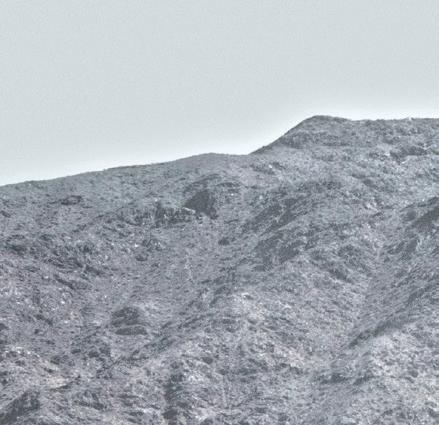
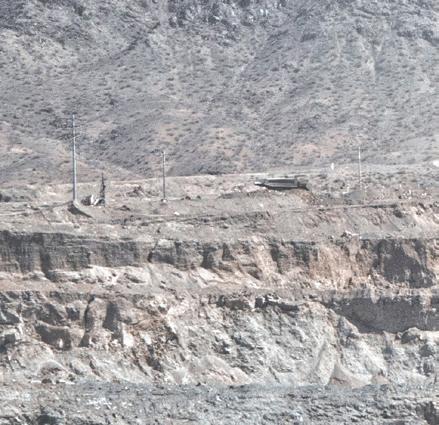


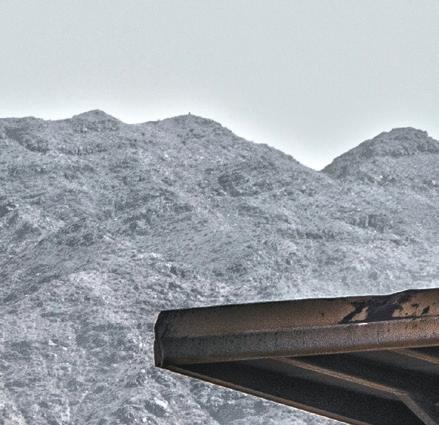




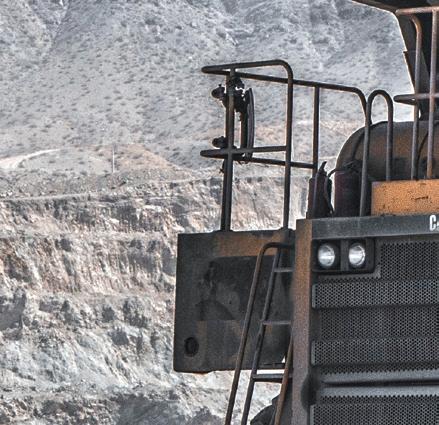
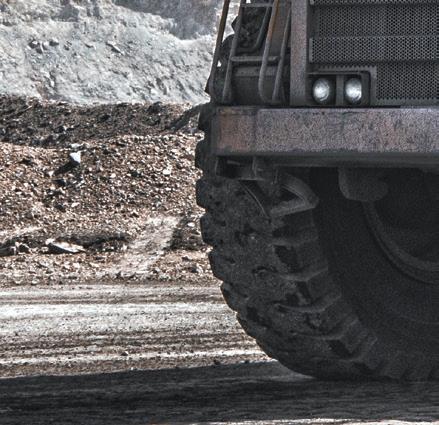














The cost of producing and transporting green hydrogen is up to five times the cost of a fossil fuel alternative.
being compressed using extreme pressure. Other ways to move it include first converting it into other chemicals like ammonia, or converting it to liquid form at -253°C.
Up to 48% of the energy content can be lost in transportation alone (tinyurl.com/4nf4bfup) through compression, liquefaction, conversion to carriers (like ammonia or methanol), and pipeline or shipping inefficiencies—all of which require significant energy input.
Most existing natural gas pipelines cannot handle pure hydrogen without substantial modifications. New infrastructure must be built almost from scratch.
If these hurdles in transporting green hydrogen are overcome, the next problem is that green hydrogen needs customers with facilities equipped to use it. For example, the steel industry is looking at moving away from polluting ovens to producing steel using green hydrogen (tinyurl. com/48f38des). This would produce almost no carbon dioxide emissions, but requires entirely new infrastructure.
Fuelling stations are another example. For an ordinary fuel station to be converted so that it could serve hydrogen vehicles, it would need either massive cooling plants and cryogenic storage tanks (which store liquefied gas at below -250°C) or high-pressure storage vessels and compressors.
The South African government’s green hydrogen strategy wants to carry out 24 feasibility studies to see how green hydrogen could be made and used by local industry. There are also plans to export it.
But the cost of producing and transporting green hydrogen is up to five times the cost of a fossil fuel alternative (tinyurl.com/5fhu9ds3). Hydrogen is very difficult to transport across the ocean. There is no chance of big green hydrogen exports happening in the short- to medium term.
These factors create risks for a potential green hydrogen industry that will make it difficult for green hydrogen projects to attract financing. Production facilities costing billions cannot be justified if transportation systems and end users are not ready and waiting.

It is also worth considering that, in many cases, solar or wind power is cheaper and more efficient than green hydrogen (tinyurl.com/ypwzsws9). For example, green hydrogen is an expensive and inefficient way to power cars compared to battery electric vehicles, or to heat homes compared to electric heat using heat pumps.
Our research suggests the South African government should focus first on industries that will find it easy to switch from fossil fuels to green hydrogen.
For example, green hydrogen could be produced and converted to green ammonia in one place, without needing new pipelines. Green ammonia can be used to make farm fertilisers that are transported as solid pellets, and so no extra infrastructure is needed to move and sell bags of green fertiliser.
However, the higher cost of green ammonia-based fertiliser (tinyurl.com/ybbsanf2) would be a problem for local sales. Nitrogenous fertiliser is used on staple crops such as maize. Higher fertiliser costs would have a knockon effect for food prices.
The transition to green hydrogen requires careful co-ordination across the entire supply chain. Rather than a ‘build it and they will come’ approach, production, transportation and usage infrastructure must be built at the same time.
As countries race to meet climate targets, policymakers must discuss all the infrastructure a green hydrogen industry needs. Without co-ordinated development across the entire value chain, the transition to clean energy could be set back.
Craig McGregor, Director Solar Thermal Energy Research Group
Bruce Douglas Young, Senior Lecturer Africa Energy Leadership Centre





The future of Africa’s energy sector: Balancing fossil fuels and renewables
There is a promising future for African renewables as the continent strives to balance its current reliance on fossil fuels. This is the prediction of the African Energy Chamber’s 2025 Outlook Report on the State of African Energy (tinyurl.com/yckp82bf).
As I have said before, Africa will eventually rely primarily on renewable energy as much of the rest of the world strives to—but on its own timetable, not that of Western countries that have benefited for centuries from the exploitation of fossil fuels.
To achieve a carbon-neutral future, African nations must have the underlying infrastructure and industry to make the dominance of renewables possible. As things currently stand, most African states lack said infrastructure and industry, and the most feasible and expedient way for them to achieve both is through leveraging the abundant oil and gas resources so many of them possess.
There are also significant challenges facing Africa’s energy sectors, as we cover in detail in our report.
The most pressing of those challenges is the fact that many rural areas across Africa are underserved and lack the necessary power infrastructure to access any electricity at all. In fact, of the 685 million people worldwide living without access to electricity, 590 million (86%) live in Africa.
Conversely, even in well-served areas, electricity is not cheap and reliable, as population and urbanisation growth have outpaced the growth of power infrastructure, placing additional strain on the existing power systems. Many African households still rely on alternative, less efficient energy sources such as biomass, kerosene and others for heating and cooking.
One practical solution to these challenges is Western investment.
Western investment—providing both funds and technology—will help expand our existing infrastructure into underserved areas and harness our natural resources, and that will go a long way to-
As our report finds:
• Fossil fuels account for 72% of Africa’s power generation. South Africa and Egypt are Africa’s leading producers, and their dominance will continue into the next decade.
• Renewables account for over 27% of Africa’s power generation and are projected to increase to 43% by the end of this decade.
• Africa accounts for 3.3% of the global power generation, with a total power generation of over 980 terawatt hours.
• 13GW of utility-scale solar PV and wind projects are under construction—South Africa, Egypt, Morocco, Ethiopia and Algeria account for over 75% of this capacity.
ward improving economic conditions across the continent. This in turn will improve energy affordability for many Africans as it becomes both more widely available and cheaper to access.
Where, and in what, should the West invest?
That is up to them, but there are many development opportunities across the continent right now. I will cover just a few of the most promising, according to our outlook report.
What we found is that most North African countries see 90% access rates for electricity and are looking to enhance their power sectors while reducing reliance on fossil fuels. The bulk of renewable power share increases by the end of the decade will almost certainly be seated in this region.
In contrast, sub-Saharan countries will continue to fight low electricity access for some time. They have been able to increase access to 55% currently, up from 38.3% in 2010. These countries will be ripe for investment, expanding the grid and production infrastructure to improve electrical access.
Solar power offers a veritable gold mine of opportunity, given Africa’s high irradiance levels
We also found that hydropower continues to dominate in East Africa, which has some of the largest dams in the world generating 19% of Africa’s overall power generation and providing up to 90% of the available power for countries such as Ethiopia and the Democratic Republic of Congo.
Africa’s largest hydroelectric project, the Grand Ethiopian Renaissance Dam is nearing completion and is expected to generate 15 760GWh annually once fully operational. The project is of such importance to the region that it has sparked diplomatic co-operation between the Nile-bound countries of Ethiopia, Egypt and Sudan in an effort to ensure equitable sharing of the river’s precious waters.
Other currently ongoing projects such as Ethiopia’s Gibe III Dam (1 870MW), Zambia and Zimbabwe’s Kariba Dam (1 830MW) and Ghana’s Akosombo Dam (1 020MW) also speak to promising future growth and development opportunities for those willing to get their feet wet in the central and eastern parts of the continent along the Congo and Nile rivers, where nearly 90% of the continent’s hydroelectric potential remains untapped.
Development Company in 2008 to both speed up geothermal advancements and lower the initial investment risk for foreign investment.
Solar power: A light in the dark Solar power offers a veritable gold mine of opportunity, given Africa’s high irradiance levels: nearly 80% of the continent receives more than 2MWh per square metre. This amounts to a solar PV potential of 1 million terawatt hours per year and a solar thermal potential of over 500 000 terawatt hours (for reference, a single terawatt hour is enough to light over 1 million homes for a year).
To achieve a carbon-neutral future, African nations must have the underlying infrastructure and industry to make the dominance of renewables possible.
Geothermal power in Africa is currently dominated by Kenya, which to date is the seventh largest producer of geothermal power. Kenya’s estimated geothermal power potential is roughly 10GW, but current operation capacity only allows 1GW to be harnessed.
International investment is what launched Kenya’s geothermal power in the first place, with the United Nations development programme providing the requisite research and funds in 1972 to establish the country’s first geothermal plant by the 1980s. Since then, Kenya has expanded independently, creating the state-owned Geothermal
Yet, to date, Africa only generates over 35TWh and 3.3TWh from solar PV and solar thermal, respectively. Over 13GW of utility-scale solar PV and wind projects are currently under construction, with hundreds more gigawatts of capacity in the concept phase.
I would like to reiterate: Africa will reach a point where we will rely primarily on low-carbon and renewable energy.
But we cannot get to that point without building the proper infrastructure, and we cannot fund the building of said infrastructure without leveraging our natural resources, oil and gas being chief among them.
If the West wishes to speed along Africa’s progress on this front, the best way is to work with African as partners and investors working toward common goals.
NJ Ayuk Executive Chairperson African Energy Chamber



Why deep seabed mining is bad for biodiversity and terrible for the economy

Land-based mining is becoming more technically complex, geographically remote or complicated for other reasons
The debate around deep seabed mining has been gaining attention as concerns mount about its potential impacts on ocean ecosystems. The ocean is host to countless species yet to be discovered (tinyurl. com/4enjdv9d), some of which could hold the key to breakthroughs in medicine.
The impacts of deep seabed mining on ocean biodiversity are still uncertain. At worst, we face losing species without ever knowing them. For instance, one type of mining targets hydrothermal mounds (tinyurl.com/msw49x3v), which are known to be unique ecosystems filled with extremophiles: sea life that has adapted to extreme conditions of heat and toxicity to thrive.
It has long been known, then, that deep seabed mining is potentially bad news for ocean life. But deep seabed mining proponents use the language of ‘necessary sacrifice’ to argue the energy transition ‘will require trade-offs’ for access to the necessary metals. This juxtaposition of biodiversity and the energy transition is a half-truth.
While the climate and biodiversity crises are intertwined, we should be beware of pitting one against the other. Yet, this is exactly what proponents of deep seabed mining are doing (tinyurl. com/5btvfkkt).
Into this fray come two recent studies published by Planet Tracker, a non-profit think tank focused on sustainable finance. In Race to the Bottom (tinyurl.com/t9cx47mb), Planet Tracker concludes that countries would receive min-

imal financial benefits from deep seabed mining. Mining for Trouble (tinyurl.com/4nrt89hr) cautions that deep seabed mining would entail huge losses for mining economies.
Before delving into the economics of deep seabed mining, it would be useful to understand where the demand is coming from.
The basic building blocks of the energy transition are critical minerals. These are also known as critical energy transition minerals or critical raw materials. Battery metals such as nickel, cobalt, copper and manganese are particularly important, as they are used to power electric vehicles.
With electric vehicle adoption expected to surge by 2040, demand for battery metals is projected to rise dramatically, which will likely lead to an increase in mining.
According to the International Energy Agency, clean energy technology minerals are set to triple by 2030 and quadruple by 2040 in a net-zero energy scenario (tinyurl.com/cyazc45p).
But the accessible ores of many metals have already been mined. As a result, land-based mining is becoming more technically complex, geographically remote or complicated for other reasons.
On the abyssal plains of the deep seabed, there are billions of tonnes of polymetallic nodules: metal-dense nodes containing nickel, cobalt, copper and manganese.
Deep seabed mining organisation The Metals Company has dubbed them “a battery in a rock” (metals.co/nodules) and
plans to begin mining operations in the Clarion Clipperton Zone of the Pacific Ocean in June this year (tinyurl.com/7vmc629v).
To date, issues raised about deep seabed mining mostly concern the lack of a governing regulatory framework (tinyurl.com/29sh4m7w), as well as uncertainties about its environmental, ecological and biodiversity impacts. Economic and social risk estimates have mainly focused on impacts to coastal communities who depend on fishing for their livelihoods (tinyurl.com/yck7whkd)
The recent Planet Tracker studies change this by highlighting the economic impacts of deep seabed mining.
Economic impacts of deep seabed mining
Deep seabed mining presents a number of financial challenges. One concern is the potential impact on metal prices. Flooding the metals markets with ocean-mined metals would likely drive down the price of the metals, which would impact the financial viability of the land-based mines that are currently producing them.
There are also doubts about the demand for these metals in the quantities predicted. Battery technology is advancing rapidly, with alternatives like lithium iron phosphate batteries— used in 40% of electric vehicles sold in 2023 (tinyurl.com/4xt2s4kw) eliminating the need for cobalt and nickel. Emerging sodium-ion batteries are set to remove the need for copper (tinyurl.com/mu8nvuua).
The financial benefits to the International Seabed Authority (www. isa.org.jm), an international organi-
sation that regulates mining in most of the world’s oceans, would also be marginal.
Projections estimate that annual royalties distributed among member countries to the United Nations Convention on the Law of the Sea (UNCLOS; tinyurl.com/ysj8prx5) would range from US$42 000 to US$7.35 million. This amount reflects both deep seabed mining corporate income tax and royalties.
In comparison, mining economies would lose more than US$560 billion annually in export earnings. This discrepancy arises because deep seabed minerals do not belong to any jurisdiction and thus cannot be similarly taxed.
To obtain exploration licences for deep seabed mining, UNCLOS requires member states to sponsor a mining operator (tinyurl.com/bddn5zx9).
While sponsoring states can impose royalties on operators, some arrangements, such as those involving The Metals Company and Nauru, are part of agreements that include no corporate income tax. This, Planet Tracker cautions, can give rise to a “race to the bottom” where member states vie to give operators the most favourable terms.
Sponsoring states also face financial risks and can find themselves liable for large amounts when they can least afford it. Papua New Guinea, for example, was left to cover AU$157 million when Nautilus Minerals collapsed (tinyurl.com/4fmj9fvr).
Finally, the financial viability of


The financial viability of deep seabed mining itself is questionable
deep seabed mining itself is questionable. Even if profitable, the environmental remediation costs for deep seabed mining could exceed the value of any metals mined—and the damage may not even be reversible (tinyurl.com/yu9h6dsj). These financial and ecological concerns paint a bleak picture. Our oceans fulfil an important planetary role, both in terms of climate and in terms of biodiversity. Should we really disturb this balance with deep seabed mining when the numbers do not even add up?
Elizabeth Steyn Assistant Professor: Law University of Calgary





South Africa’s new National Petroleum Company signals a shift in African energy governance

The SANPC’s establishment comes at a time when Africa’s energy sector is striving to create a more enabling environment for investment.
The launch of the South African National Petroleum Company (SANPC) in April 2025 marked a significant step in South Africa’s ongoing efforts to restructure its energy sector and improve efficiency within stateowned enterprises.
The establishment of the SANPC— which consolidates PetroSA, iGas and the Strategic Fuel Fund (SFF)—aligns with broader regional trends in energy governance, where national oil companies (NOCs) are increasingly being positioned as catalysts for investment, security of supply and economic development.
The company will function under a lease and assignment model, allowing the SANPC to lease select assets from the merging entities while isolating PetroSA’s legacy liabilities and the operational challenges at its gas-toliquids refinery in the Western Cape, explains Energy Capital & Power.
With a clear mandate to promote energy independence and diversification, the SANPC is set to drive large-scale investments in the oil, gas and clean energy sectors. Its strategy includes ring-fencing all non-functioning assets, identifying assets that can be moved to the NOC, and ensuring these assets can be traded and utilised effectively.
According to a media statement by the Department of Mineral Resources
& Energy, this approach will “improve the financial risk profile for the SANPC to secure funding as well as provide a legally sound solution to deal with the constraints associated with the non-profit status of the SFF. The lease and assignment transaction is thus deemed necessary and the most effective approach for the merger.
“With the combined strengths of the three subsidiaries, a solid financial position and robust stakeholder support, the SANPC is well positioned to leverage these benefits and seize the R95-billion market opportunity.”
The SANPC’s strategic vision aligns with South Africa’s National Development Plan, which outlines the country’s goals to expand access to affordable, reliable energy while navigating the energy transition.
The creation of the SANPC marks a bold step toward achieving these objectives, acting as a catalyst for new ventures, partnerships and large-scale infrastructure projects.
The process to establish the SANPC was set in motion by President Cyril Ramaphosa during his State of the Nation Address on 13 February 2020 when he announced the government’s intention to repurpose and rationalise state-owned enterprises to support the country’s growth and development— creating a more competitive and investment-friendly energy sector.
The merger process, overseen by
the Central Energy Fund Group—a schedule 2 state-owned diversified energy company reporting to the Department of Mineral and Petroleum Resources—progressed steadily, with agreements put in place to ensure a smooth transition for employees.
According to the SANPC, as part of the first phase of the transition, 402 employees out of a total of 1022 have already moved to the SANPC. The remaining employees will be transferred in the second phase, once those assets have been optimised and stabilised.
The SANPC’s establishment comes at a time when Africa’s energy sector is striving to create a more enabling environment for investment. As South Africa works to streamline its stateowned energy enterprises, other African nations are similarly evaluating how to strengthen their own NOCs to attract investment, drive economic growth and navigate the global energy transition.
In Angola, Sonangol has embarked on a restructuring process to enhance its operational efficiency and financial sustainability, including divesting non-core assets and increasing transparency to attract private sector investment.
Similarly, Ghana’s GNPC has pursued strategic partnerships with international oil companies to maximise offshore exploration and production
while ensuring local participation in energy projects.
These efforts reflect a broader trend across the continent, where governments are leveraging regulatory reforms and governance improvements to make their NOCs more competitive in the global energy market.
Nigeria has also taken significant steps with the transformation of the Nigerian National Petroleum Company (NNPC), a commercially driven entity under its Petroleum Industry Act. The shift aims to position NNPC as a profit-oriented enterprise, reducing government dependence on oil revenues while fostering a more attractive investment climate.
The success of these reforms will serve as a key reference for the SANPC and other emerging NOCs in Africa, underscoring the importance of strong governance, fiscal disci-
pline and strategic partnerships in the sector.
As the newly established NOC progresses, its approach to workforce integration and skills development will serve as a benchmark for other state-owned enterprises in Africa looking to balance efficiency with social responsibility.
With regulatory and policy frameworks playing a crucial role in shaping investor confidence, the SANPC’s structure and governance will be closely watched by industry stakeholders. Its success—or challenges— could offer valuable lessons for other African countries seeking to optimise their state energy assets while balancing the transition to cleaner energy sources.
Godfrey Moagi has been appointed the interim CEO of the SANPC. He has a wealth of experience in driving
successful business strategies and initiatives as the CEO of the SFF, and has been with the Central Energy Fund Group for the past eight years.
As South Africa’s energy landscape undergoes reform, the SANPC aims to drive the rapid deployment of new projects while adhering to the highest sustainability standards and fostering regional integration in the oil & gas sector.
For further information, visit sa-npc.co.za.
With a clear mandate to promote energy independence and diversification, the SANPC is set to drive large-scale investments in the oil, gas and clean energy sectors.



The GECF’s 9th edition of the Global Gas Outlook 2050 explores key trends and developments in Africa’s natural gas market


The Gas Exporting Countries Forum (GECF) released the 9th edition of its Global Gas Outlook 2050 in March, offering an in-depth analysis of the future of natural gas. A flagship publication in the global energy landscape, this latest edition explores key trends and developments in the natural gas market.
The report will support global companies and policymakers in navigating the energy trilemma, balancing economic growth, energy demand, supply challenges and evolving market dynamics. It will remain steadfast in analysing energy systems through the lens of sustainable development and the fundamental drivers of demographic expansion, economic growth, rising standards of living, and energy efficiency gains.
The Global Gas Outlook 2050 was launched during a GECF-led webinar, coinciding with a crucial period for Africa’s natural gas industry. The previous edition was unveiled on the sidelines of the 7th Summit of Heads of State and Government in Algiers in February last year. This latest outlook has been developed since then, with its core modelling conducted in 2024.
Africa’s natural gas reserves account for approximately 6% of global supply, with an expected growth of 15% by 2030. This expansion, while moderate compared to other regions, underscores Africa’s liquefied natural gas (LNG) potential, particularly as global gas demand is projected to increase at a compound annual growth rate of 1.5% until 2030, with LNG representing approximately 10%–15% of that demand.
“The findings of the report confirm our argument that only a diverse energy mix tailored to the specific needs of various regions can balance affordability, security and sustainability,” stated Eng. Mohamed Hamel (pictured below), GECF executive-secretary, in his welcoming remarks.
“2024 lent further credence to these convictions, as global consumption of oil, gas, coal and even wood soared to record levels despite rapid renewable growth, with natural gas accounting for 40% of the incremental energy demand—the highest share of any fuel.
“We are convinced now more than ever that natural gas is not only a bridge to the future but an integral part of the future. Indeed, natural gas demand is expected to grow by 32% by 2050, showing no peak in sight... Natural gas remains indispensable for the transition from biomass to cleaner cooking fuels, switching from coal to gas, providing backup and stability to renewables, powering AI data centres, decarbonising transport and hard-to-abate
industries, and ensuring food security through fertiliser production.
“In developing countries, particularly in Africa, natural gas is not merely an energy resource; it is a catalyst for growth, industrialisation and prosperity. Ensuring access to natural gas is not just an economic necessity but a moral obligation to lift people out of poverty.”
He added, “I would like to emphasise the crucial role of GECF member countries. Endowed with vast natural gas resources and advanced technological expertise, they are at the forefront of the evolving energy landscape, playing a vital role in meeting the world’s future energy needs. By 2050, their contribution is expected to approach half of global natural gas production, underscoring their strategic importance in shaping a stable and sustainable energy future.”
According to the report, global primary energy demand is expected to increase by 18% between 2023 and 2050, with no peak in sight. The global energy mix is diversifying, with natural gas projected to supply 26% of total energy by 2050. As a result, natural gas demand is set to rise steadily, reaching 5.1 trillion cubic metres by 2050—a 32% increase from 2023
Africa’s natural gas reserves account for approximately 6% of global supply, with an expected growth of 15% by 2030.

levels. This represents the second-fastest growth rate in energy demand after renewables.
Africa, the Middle East and Eurasia are expected to drive nearly 87% of the global natural gas production expansion by 2050.
“The GECF Global Gas Outlook 2050 provides policymakers, investors and stakeholders with valuable insights into the future of global energy markets,” said Sheik Mishal bin Jabor Al-Thani, GECF executive board member. “[This] launch comes at a pivotal moment. The energy sector must evolve to meet these evolutions while addressing energy security, sustainability and economic growth. Despite the world’s tremendous progress, energy poverty remains a pressing challenge—and natural gas plays a central role in meeting the world’s challenges.”
The global natural gas trade is undergoing a transformation, with LNG taking centre stage. LNG trade is projected to double, reaching 800 million tonnes by 2050. To support this expansion, cumulative global investments in natural gas are expected to total $11.1 trillion by 2050, with $10.4 trillion allocated to upstream development and $700 billion to downstream infrastructure.
Natural gas—when combined with decarbonisation technologies such as carbon capture, utilisation and storage—provides a viable pathway to a balanced and sustainable energy transition.
According to the outlook, key drivers of natural gas growth include favourable policies, increasing global LNG production and rising demand for power generation. With Africa’s urbanisation rate expected to reach 68% by 2030, natural gas is positioned to drive technological innovation, economic growth and regional co-operation.
Primary energy demand in Africa is forecast to grow at an annual rate of 0.6% through 2050, accounting for a quarter of the global increase. Notably, Africa is set to lead global natural gas demand growth at a rate of 3% annually—the fastest worldwide.
More than 600 million people across Africa lack electricity and more than 900 million are without access to clean cooking solutions. The Sustainable Energy Scenario outlined in the outlook report demonstrates that “a balanced pathway exists: one that ensures energy security, affordability and sustainability while ensuring no one is left behind. This pathway requires even more natural gas,” noted Hamel.
As global interest in African hydrocarbons rises, GECF member countries—including Angola, Algeria, Libya, Nigeria, Senegal, Mauritania, Egypt and Mozambique—are well-positioned to drive economic expansion and maximise energy monetisation strategies.
The 9th edition of the Global Gas Outlook is available here: tinyurl.com/yeyts294
“Only
a diverse energy mix tailored to the specific needs of various regions can balance affordability, security and sustainability”




Mining must become more responsible and sustainable—where hi-tech solutions fit in
Digital technologies can transform mining practices and achieve sustainability goals at the same time
If you visit a commercial mining operation anywhere in the world today, some sights and sounds— workers descending in elevators to underground shafts, the roar of truck engines—will be much the same as they have been for decades.
But, like many other industries, mining is changing. Digital mining involves the use of digital technologies to make mining operations more efficient, safer and sustainable. This industry emerged about a decade ago and has developed quickly over the past few years. This uptick is the result of recent advances in sensor technology, data analytics and artificial intelligence (AI), including machine learning.
However, while technology improves, old problems persist. Largescale mining causes massive deforestation in regions like the Amazon. It also threatens and displaces commu-
nities, as in the case of Brazil’s Xikrin and Kayapó people. In the Democratic Republic of Congo, the mining of cobalt, copper and coltan (all crucial for modern technology) contaminates local water supplies and puts workers, including children, in danger.
Is it time to make mining obsolete? This is not a realistic solution, at least not in the near future. Many modern technologies like smartphones, electric vehicles, solar panels and wind turbines depend on minerals extracted through mining. The global move toward renewable energy and low-carbon technologies means demand for minerals like lithium and cobalt is rising.
So, while mining has environmental costs, it’s also critical in the shift to a greener economy. And mining is economically important in many parts of the world. In African countries, it supports millions of jobs and contributes significantly to gross domestic product (shorturl.at/jR7k0).
This is why sustainable mining is crucial. I am a professor of information systems. I investigate the complex interactions between technology, people and organisations in achieving sustainability goals. In a recent paper (shorturl.at/yUiDD), I exam-
ined how digital technologies could help mining operations to balance economic objectives with environmental and social sustainability.
The findings make it clear that digital technologies can transform mining practices and achieve sustainability goals at the same time.
Our paper took the form of a case study. We interviewed professionals from a leading digital mining solutions company. It has operations in South Africa, Australia, Brazil, Chile and the United States. The interviewees were engineers, senior managers and executives. They offered a glimpse into how their largescale mining clients were using digital technologies like automated haul trucks and collision avoidance systems.
We wanted to know how their clients saw the role of digital technology in balancing business and other goals. They outlined some successful cases and others where companies were struggling to align all their aims.
It was clear the company and its clients recognised the importance of safety and environmental issues in their work. But they saw these is-


sues through the lens of business sustainability. For instance, while some mining companies pursued safety improvements, they did it primarily to boost productivity and bring down costs.
One interviewee gave the example of collision avoidance systems. Companies valued these because they reduced downtime and improved productivity. They focused on immediate business needs.
A balancing act
It is time for mining companies that are serious about sustainability to shift their focus. Rather than simply looking to make immediate profits, they need to consider environmental and social impacts—and the role digital technology can play.
As a simple example, AI can predict when machinery is likely to fail. This allows companies to carry out timely maintenance. Equipment lifespan is extended. Downtime and repair costs are reduced. And worker safety is improved because there are fewer unexpected breakdowns.
This is the kind of sustainable approach, underpinned by digital technology, that can help mining companies tick all the right boxes.
Mining leaders must not exclude employees and stakeholders when considering these issues. Environmental advocates have a role to play, too: Companies must work with these groups and with local communities. A shared understanding of how digital technologies can meet both financial and sustainability targets is key.
Mining companies are more likely to change if there are clear financial benefits or penalties tied to sustainability. Governments can help by introducing stricter environmental regulations and offering incentives to adopt sustainable digital technologies.
In South Africa, for instance, there are tax incentives and subsidies to encourage the use of renewable energy in mining (shorturl.at/BgLXG). These measures, expanded recently in response to the country’s energy crisis, have sparked significant investment in solar power.
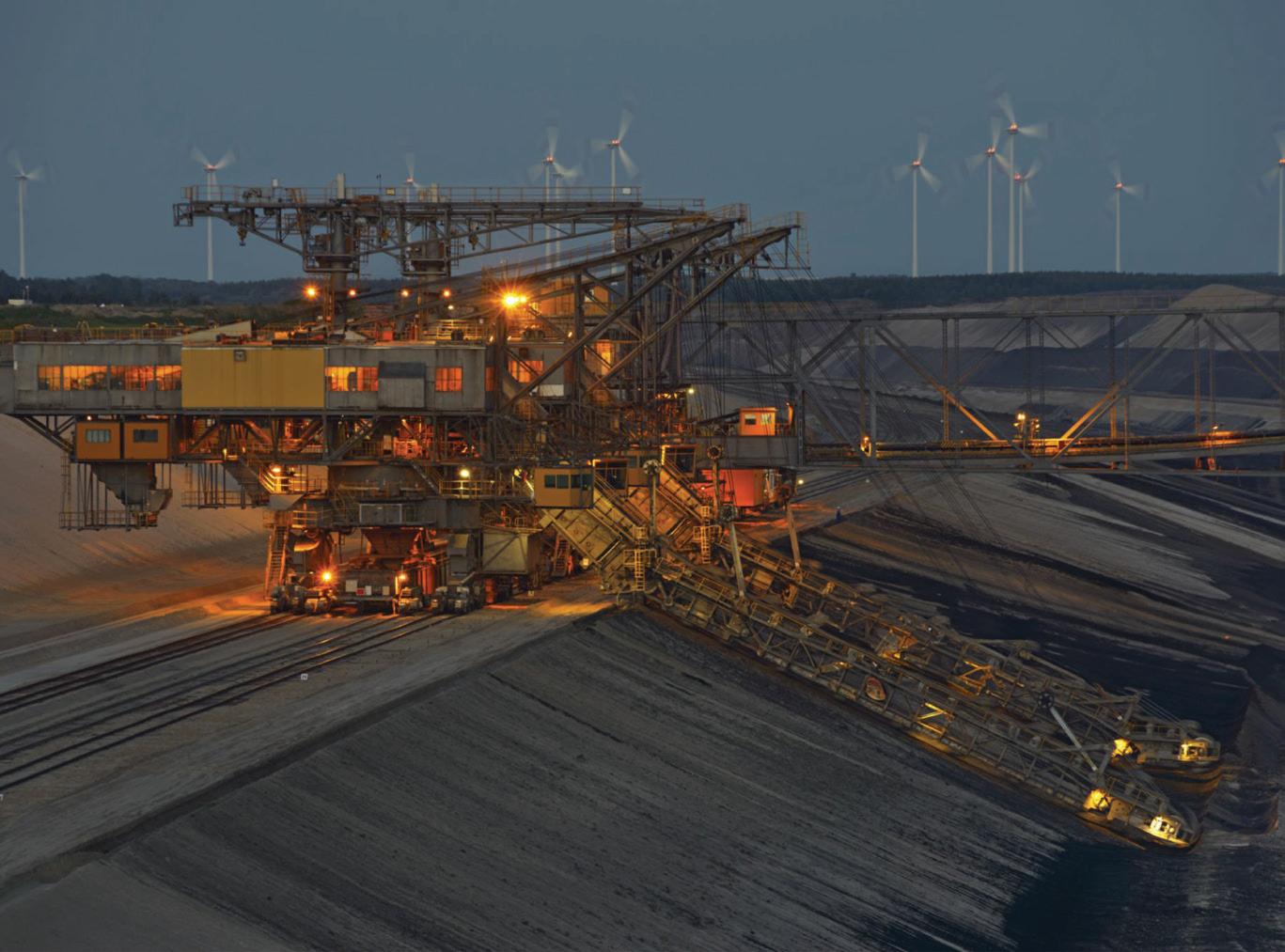
When paired with digital monitoring systems, renewable energy solutions can enhance efficiency by optimising energy consumption and reducing carbon emissions. Technologies like AI-driven energy management systems can help mines integrate renewable sources with less energy wastage. Thus, tax breaks or subsidies for digital solutions that support green energy adoption could motivate companies to embrace greener and more tech-driven mining practices.
Consumers and investors, meanwhile, should invest in those mining companies that demonstrate respon-
sible practices. Ethical investment funds need to support companies with strong environmental, social and governance credentials.
Rennie Naidoo Professor: Information Systems University of
the Witwatersrand
Mining companies are more likely to change if there are clear financial benefits or penalties tied to sustainability.
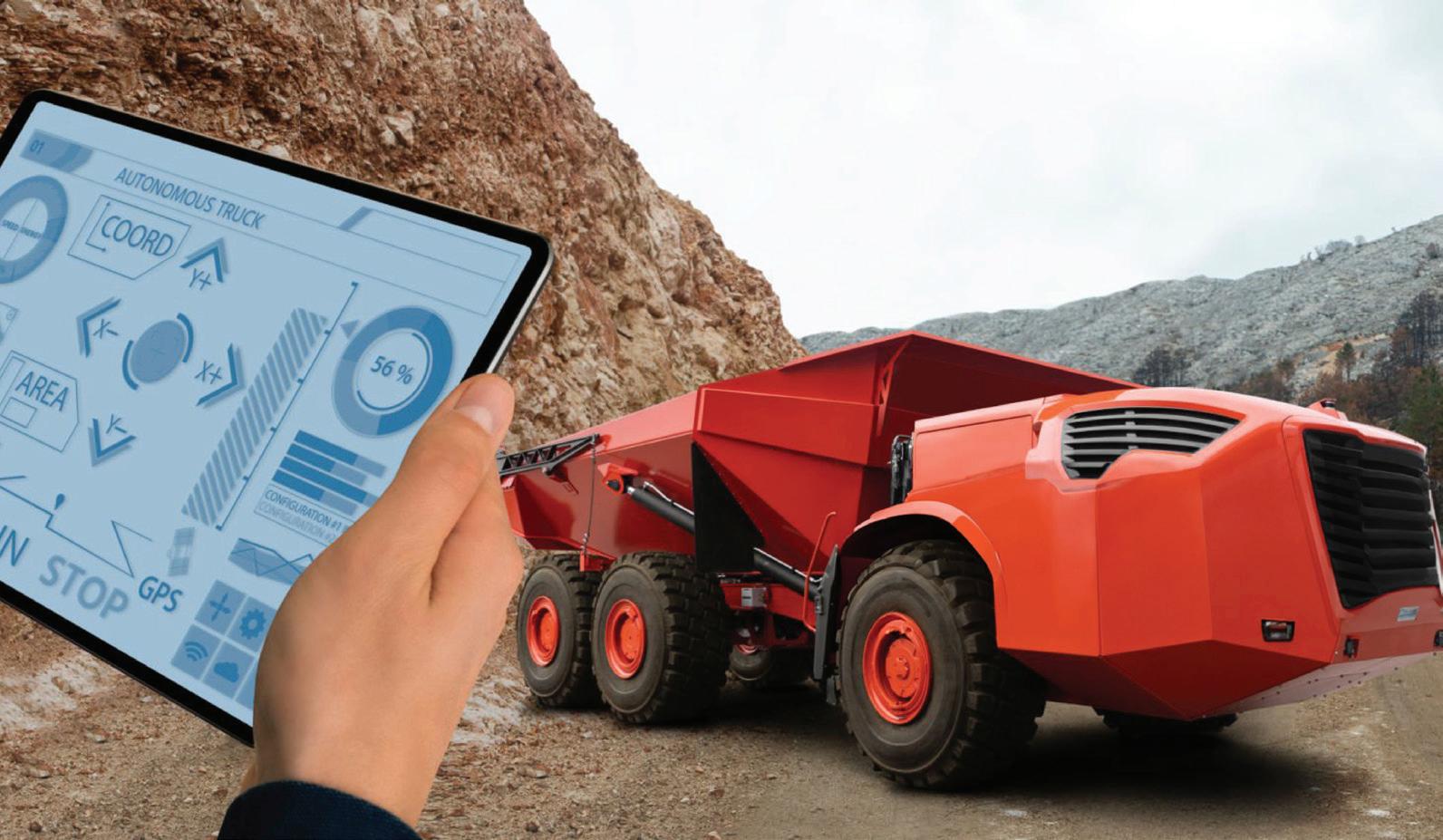



A holistic approach to personal protective equipment is needed to close the mining gender gap
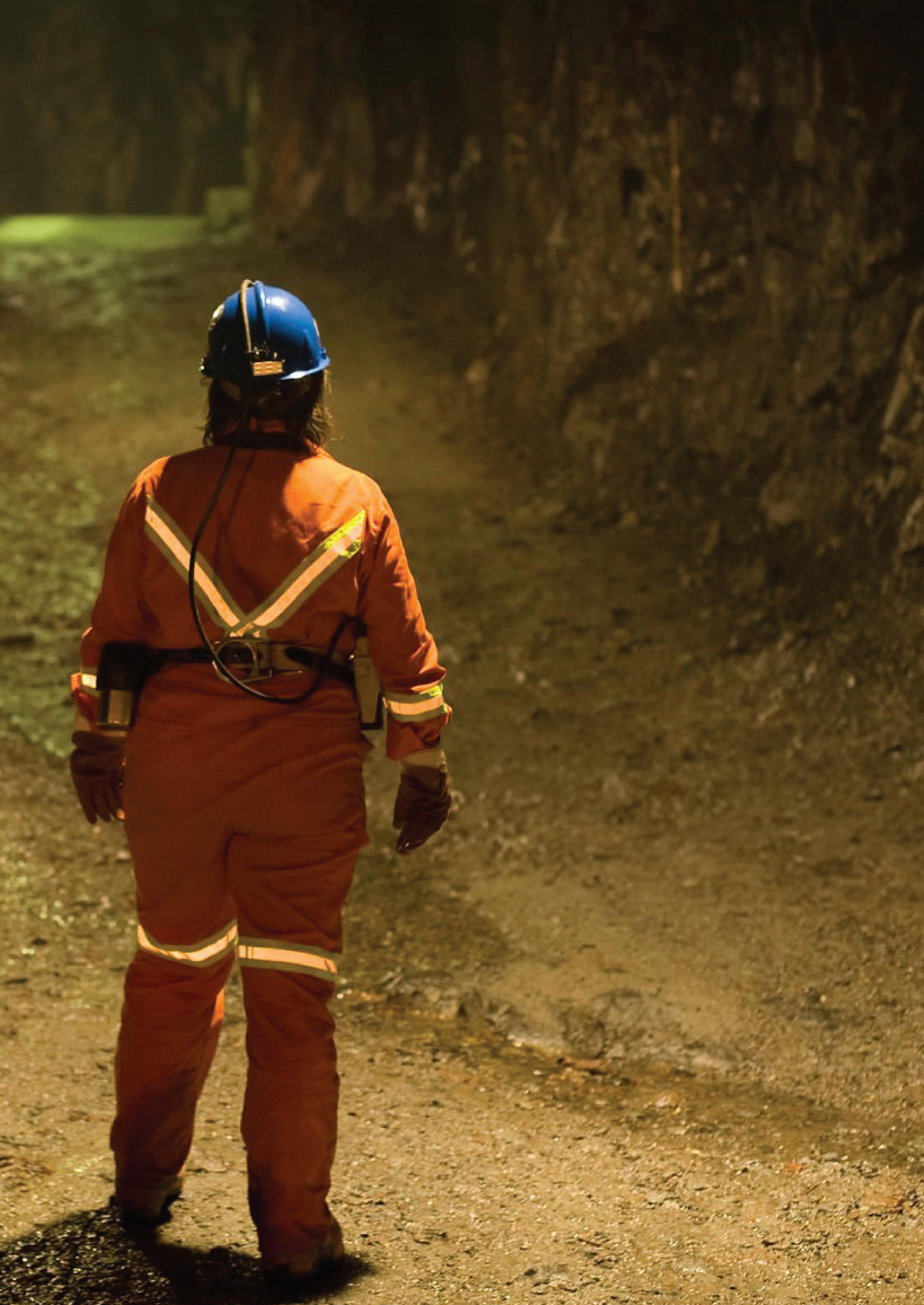
The number of women working in the mining sector has increased significantly over the past 17 years, with the numbers growing from 11 400 in 2002 to more than 53 100 today. This represents about 12% of the entire mining workforce of 464 667.
However, an area that has lagged significantly in the facilitation of women’s entry into mining has been the provision of personal protective equipment (PPE) that is designed specifically for women miners. Recent industry statistics paint a concerning picture: While women now constitute 15% of the mining workforce, a staggering 85% work in ill-fitting safety shoes, and only 4% have access to properly fitted PPE.
This can largely be attributed to a general lack of awareness within the industry, with many still considering PPE for women as being more about adding a ‘feminine touch’ rather than addressing the practicalities of workwear that is tailored to the female anatomy.
A commonly observed trend is that many companies still procure male and/or unisex safety wear due to a lack of understanding the anatomy of a women differs greatly to that of a man and, as a result, the PPE procured should reflect this. Comfort can have a profound effect on productivity, which means ill-fitting equipment could seriously impact a wearer’s quality of work.
A critical consideration is thus that ill-fitting safety footwear and workwear leads to several issues including discomfort and pain, lowered productivity, absenteeism due to health-related problems such as urinary infections, and even a psychological barrier to the work environment.
“The consequences of ill-fitting PPE for women are dire,” stresses Jamie-Lee Bishop from Sisi Safety Wear (www.sisi.co.za/safety-wear).
“Unisex and men’s designs compromise safety by restricting movement, hindering escape in emergencies and increasing the risk of injury... This can be as dangerous as working without any protection at all.”








While women now constitute 15% of the mining workforce, a staggering 85% work in ill-fitting safety shoes, and only 4% have access to properly fitted PPE.














Industrial psychologist Uma Naidoo says if someone is not comfortable in their attire, in which they spend about eight hours of the day, it could lead to frustration, poor concentration, increased breaks and many other debilitating effects on productivity. She says workers who are uncomfortable in their clothing are not functioning at their best.
The mining industry has traditionally been a male-dominated space, particularly with regard to heavy work and, despite many strides having been made in terms of gender inclusivity, the environment still remains a tough one for women.
It must be remembered that even performing basic bodily functions still holds significantly more challenges for women miners than their male counterparts.
For instance, consider that the simple task of going to the toilet can be a hardship. Often, women who work underground must walk to toilets that are up to 400 metres away from a blast site (legal requirement) just to relieve themselves


Another challenge upon reaching the toilet is the removal of the garment. Because women are making use of a men’s boiler suit, the only way to relieve themselves is to unzip the boiler suit and remove it in its entirety (from top to bottom). To do this, women further need to remove other parts of their mandatory kit, such as their hard hat, safety pack and torch battery.
Another factor that affects a women’s dignity is that the colour of their underground mining boiler suit is unbleached. When women have sanitary-related accidents underground, it shows up on this colour and exposes the accident to all.
Thus, the issue of discomfort due to design, as the anatomy of a woman is different to that of a man, is a critical point that needs to be explored when considering the health and well-being of female workers on the mines, as well as increased productivity.
To address this, a range of safety wear that challenges the status quo that ‘one size fits all’ has been designed through extensive research
and consultation with women in industry. This includes a groundbreaking boiler suit for women miners, which includes innovative features such as the V-flap at the back of the boiler suit to improve the ease with which women use ablution facilities, and the inclusion of navy fabric between the hip and thigh area to save her the embarrassment of a sanitary-related accident.
Now, when going to the toilet, the top part of the boiler suit does not need to be undone or removed, due to the V-flap design in the back. This makes it easier for women to relieve themselves more regularly rather than holding it in for the greater part of the shift, compromising their comfort and increasing the chances of a urinary infection.
The design of the boiler suit is cut according to a women’s anatomy, with a narrower back area and wider front area and shorter crotch-to-waist ratio than a man’s.
Also, women naturally have wider hips and a more pronounced posterior, which is accommodated in the design, allowing for the elasticated waist band to rest where a women’s waistline is typically situated.
For aboveground workers, female conti suit jackets are tailored at the back to accommodate for a women’s narrower back, but broader at the front to accommodate her bust area. This enables a woman to move freely within her jacket without restriction when moving her arms.
Trousers are also designed to have a higher waist to prevent the exposure of the back and midriff regions when bending over or raising arms. Garments designed for men often result in trousers that sit below the belly button and place pressure on caesarean scars, and expose the upper half of a women’s posterior when she bends over.
To combat this, women have tended to wear nylon tights underneath their pants for modesty purposes. Nylon does not absorb moisture, keeping the skin damp during the day, which becomes a breeding ground for bacterial and fungal infections. Furthermore, because sweat in not absorbed, the salt crystals remain on the skin, rubbing together and causing chafing. In hot, moist environments, many women contract bacterial and vaginal infections due to such under garments.






Sisi Safety Wear has recently unveiled its latest innovation: the Sisi Fuse safety boot. It offers 20KVA electrical resistance and features a PU/rubber sole designed for optimal comfort and durability. The boot represents a significant advancement in women’s mining safety, combining superior protection with ergonomic design principles.











“Women in mining deserve safety gear that fits their bodies, upholds their dignity and meets their specific needs without compromise,” Bishop emphasises. “Our goal is to educate, engage and partner with industry leaders to drive meaningful change.”






If the mining industry is truly to close the gender gap, more needs to be done than simply hiring women to make up the numbers. A holistic approach needs to be taken to address the physiological requirements of a female workforce to put women on an equal footing with their male co-workers.
“Women in mining deserve safety gear that fits their bodies, upholds their dignity and meets their specific needs without compromise.”







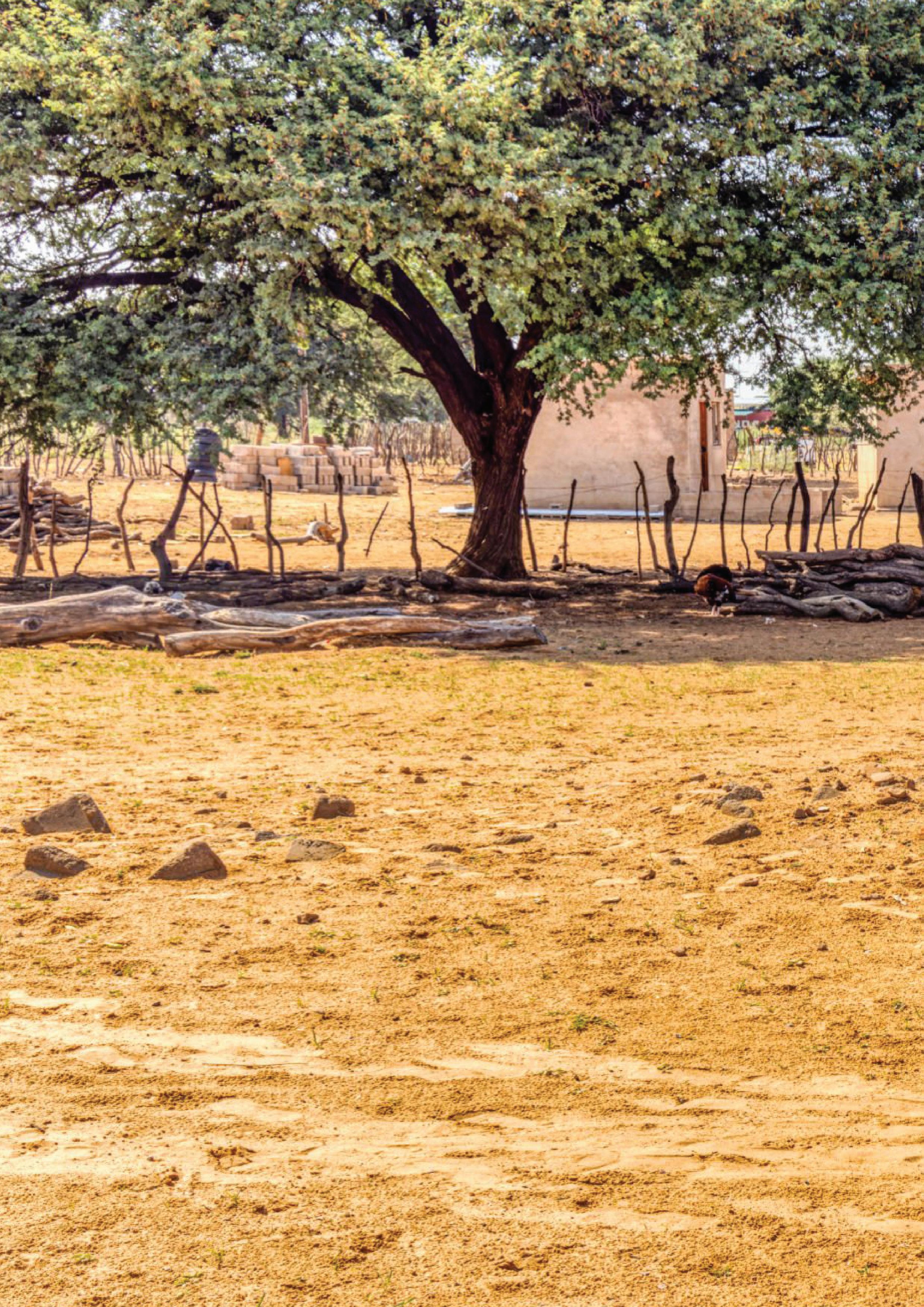


Green energy doesn’t benefit everyone: Ubuntu ideas can help include more people
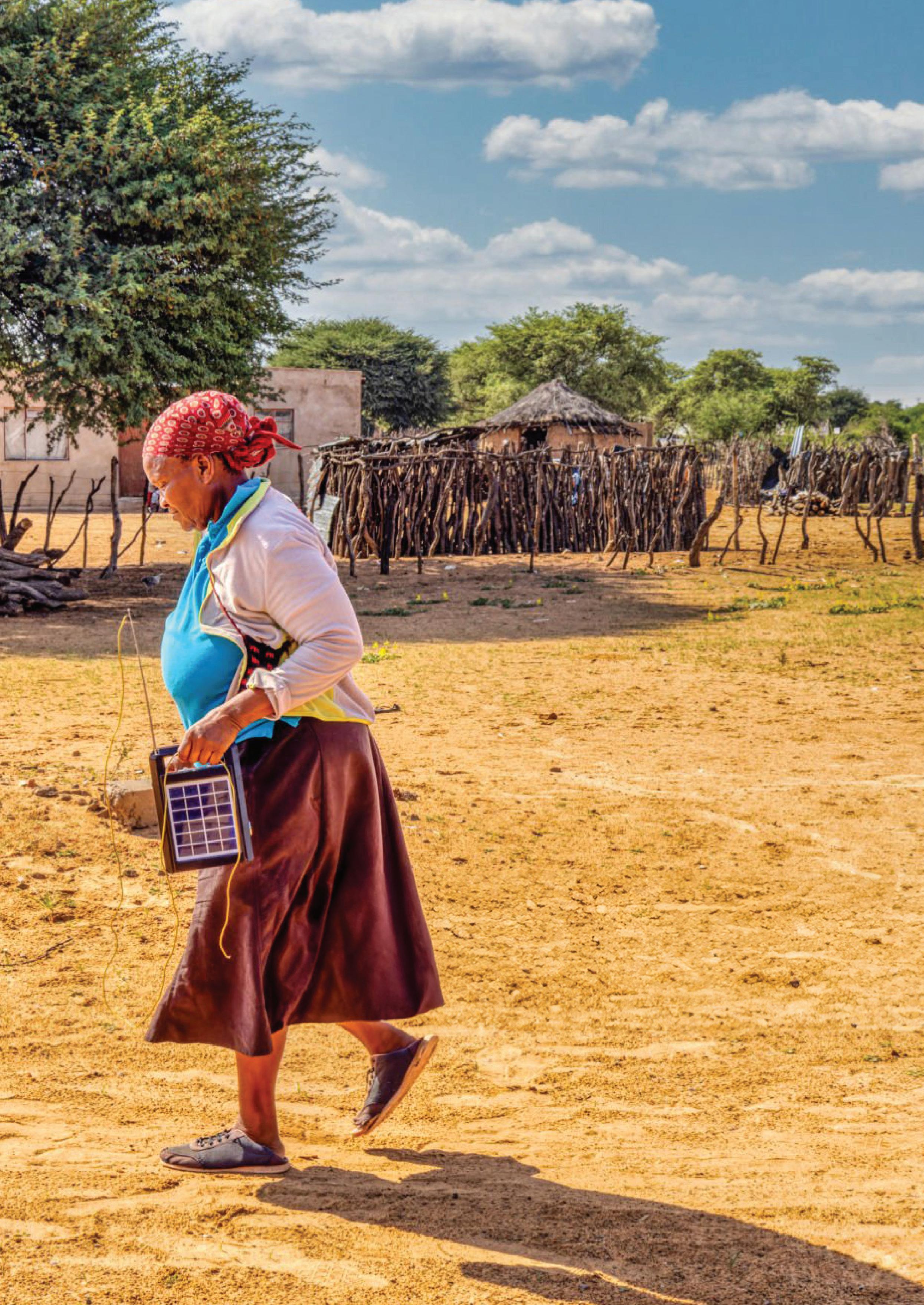
Ellen Fungisai Chipango is a scholar of the communal ethic of African ubuntu: the belief that we are at our best as individuals and society if we work for the good of others, alongside others. She researches ways in which ubuntu can be applied in real-life situations involving energy.
In this article, she discusses her latest publication (tinyurl.com/k6bpfa6) about applying an ubuntu feminist approach to rolling out renewable energy. Ubuntu feminism is the idea that everyone is obliged to care for each other’s well-being.
What are the limitations in the transition to renewable energy?
One limitation is that the move to green energy will not necessarily benefit women. For example, women in sub-Saharan Africa do more work at home and therefore spend more time than men working on heating the home and using energy for cooking (tinyurl.com/4695wk3p). They walk longer distances to collect firewood, risking their safety at night when they are exposed to sexualand gender-based violence (tinyurl. com/24d83t6u).
If renewable energy becomes available, this doesn’t mean women will automatically be able to access enough of it or that it will be useful to them. For example, my research
(tinyurl.com/dcmw2eyt) has previously found that in Zimbabwe, one solar panel is not enough to power electric kettles, irons and stoves. This can lead women to cooking on fires.
Another limitation is that women account for only one-third of the workforce in renewable energy jobs globally (tinyurl.com/3kbk266a). A lack of gender equity is pronounced in technical, managerial and policy-making decisions. In South Africa’s renewable energy sector, women make up only 14% of the workforce (tinyurl.com/3axzr6mn).
The Paris Agreement (a legally binding international treaty on climate change: tinyurl.com/3zene9ch) emphasises that women must be put first in the energy transition process. But this is mainly happening through the use of smart economics (tinyurl. com/y2eejejh): when gender equality is viewed as giving women and girls access to resources and opportunities, with the hope that these will benefit families, communities and the next generation, and boost economic growth.
Individual jobs for women in green energy are important. But smart economics and inclusion don’t dismantle the structures of power, class and imperialism that oppress women. For example, when countries in the global north switch to renewable energy, women in the global south

bear the cost when they provide cheap labour in mines for critical minerals or in green technology factories (tinyurl.com/4ujea4av).
The transition is also said to be just or fair (tinyurl.com/4vrsxynf) if enough female individuals get jobs in renewable energy. But this is limited, too, because older women who no longer work don’t benefit from green jobs and are therefore excluded (tinyurl.com/ynb5h4jx).
If renewable energy becomes available, this doesn’t mean women will automatically be able to access enough of it or that it will be useful to them.
How have you proposed getting around these limitations?
I propose that a framework based on ubuntu feminism could be a solution. Ubuntu is expressed as a person being a person through other persons.
Ubuntu feminism stresses that just energy use depends on putting women first through the spirit of working together toward a common goal. It says the renewable energy rollout must recognise that energy is not just needed by individual families in


their own homes, but also plays a role in making social bonds in communities stronger.
An ubuntu feminist framework for renewable energy provision should:
Encourage a deep sense of belonging
Ubuntu says caring for and being cared for is a function of all within the community. All renewable energy policies must aim to unite people.
Preserve and support social bonds
During my fieldwork, a rural resident of Zimbabwe said, “being energy poor means failure to meet what is expected of me as a woman by society”. In other words, having access to energy allows people to play their role in their community. It means a woman can, for instance, prepare food to take to a community event, or to help feed a neighbour’s children.
Address power dynamics
When the state and service providers fail to deliver energy services, this erodes the humanity of women and the service providers. The just transition will need to make sure renewable energy providers do not fail in the same way that nonrenewable energy providers have done.
Emphasise social harmony with the needy
Renewable energy must be delivered with the needy in mind, such as those who live in shack settlements, or the elderly and infirm.
Make sure the future is one where everyone works together
Renewable energy technologies do not guarantee democracy and equality. They are neutral, and can serve any individual or administration. Ubuntu feminism, on the other hand, envisions a future that benefits everyone (tinyurl. com/2s36w4m)
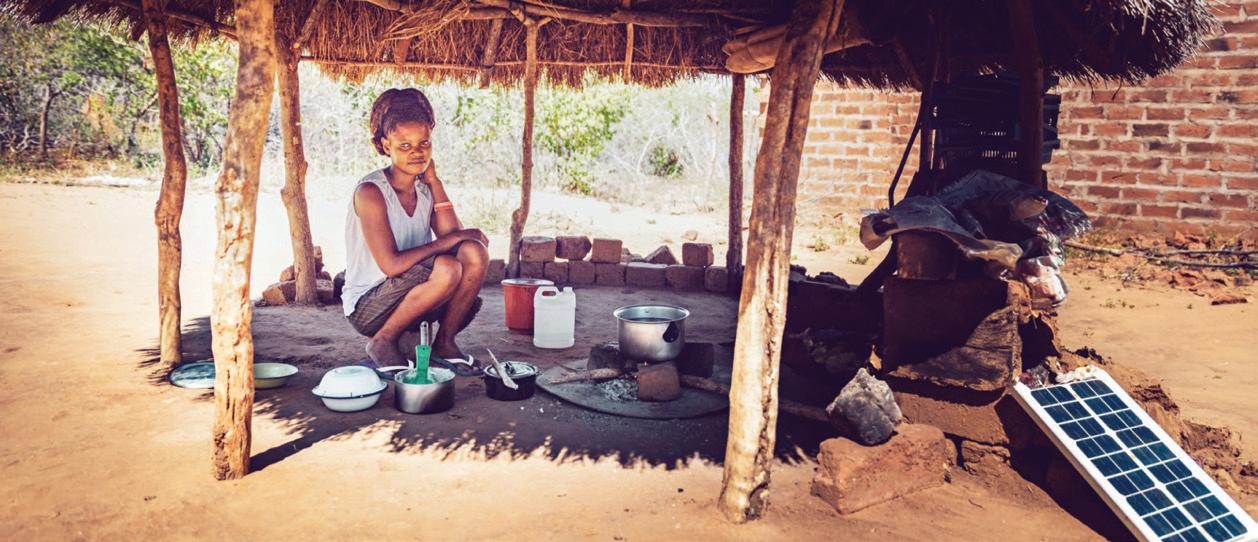
What steps would build this approach into a just transition plan?
People in society who have a lower social standing, such as the impoverished, and who are from less privileged genders, such as women, will not benefit from renewable energy unless their needs are put first. That is the first step.
The just transition also needs to include a restorative justice process between fossil fuel companies and those who were affected by pollution from those companies. Restorative justice aims to bring about reconciliation and healing for both the victim and the perpetrator.
Offenders are encouraged to accept responsibility for their actions. For example, the coal industry needs to repair the harm its pollution has caused.
The next step is to give social movements a key role in renewable energy (tinyurl.com/4kaep4wn). Social movements organise people around a collective goal. They’re generally able to monitor how the energy transition is going, and strengthen local, community and municipal control over energy.
Ubuntu feminism aims to forge a more equitable future. It should be applied to the struggle for a just energy transition because it sets out the ways that we can move away from fossil fuels and toward renewable energy in the spirit of collective well-being.
Ellen Fungisai Chipango is a senior research associate at the University of Johannesburg.
Ubuntu feminism stresses that just energy use depends on putting women first through the spirit of working together toward a common goal.

The private security industry plays a vital role in safeguarding lives, property, and critical infrastructure across South Africa. Whether you’re provider managing operations, it’s essential to know that with every right comes responsibility
As a registered security professional, you are entitled to fair treatment, protection of your occupational rights, and the freedom to build a career in any sector of the industry
• Right to choose any occupation within the Private Security Industry
o Private investigator
o Security consultants
o In-house
o Guarding sector
o Close protection
o Response security
o Assets in transit
o Events security
o Control room


Security responsibility:
• Protecting clients
• Disclosure – conflict of interest
• Employing registered security officers
o Security equipment Manufactures
o Locksmiths
o Electronic security
o Security training
• Right to protect interest and status (provide instances that this would be applicable)
• Treated equally in employment (Basic Conditions of Employment, Minimum wage)
Contact Details
Help Desk: 086 133 3850 | Email: info@psira.co.za WhatsApp: 082 803 4329 | www.psira.co.za
• Carrying PSiRA identity cards
• Security Service Providers must receive training on how to protect people and property
• Keeping records for at least four years and hand over any records to law enforcement when necessary
1.
Do you feel vulnerable to the whims of your boss, peers or internal politics? Human behaviour professor and award-winning career coach Melody Wilding has helped thousands of clients advocate for their needs at work while navigating office politics. In this clear, tactical guide, you’ll find time-tested strategies, detailed scripts and transformative insights. No matter your level, reclaim control of your career.



2.

3.You’re the Boss by Sabina Nawaz (R430)
Former Microsoft executive and Fortune 500 CEO coach, Sabina Nawaz, delivers a practical guide for managers at a time when managing is harder than ever. This book explains why top performers inevitably turn into terrible managers when their behaviour, compounded by the power and pressure that come from climbing the corporate ladder, engenders toxic work cultures and saps everyone else’s enthusiasm around them. Nawaz introduces simple strategies that you can implement today that rail-guard against the common pitfalls of management.
Four Future Seasons by Dr Craig Wing (R340)
In an increasingly unpredictable world, traditional methods of planning no longer suffice. Four Future Seasons offers a groundbreaking approach to navigating uncertainty, empowering readers to adapt to the future and actively shape it. The author combines deep insights with practical strategies to anticipate disruptions and thrive in times of change. This book is for anyone who wants to create a better future for themselves, whether navigating personal growth, leadership challenges or unforeseen life changes.

4.
Taking the Anxiety out of AI by Sameer Rawjee (R320)
AI is going to change your world—but don’t panic. This book explains how to live with AI, how to benefit from it, and how to avoid being replaced by it. It explores the differences between human intelligence and artificial intelligence, considers what tasks will always be performed better by humans, and sets out possible futures in which humans and AI work together. It provides tools to work out how AI will affect your role, what skills you need to learn, and which mindsets will equip you to thrive in the future.
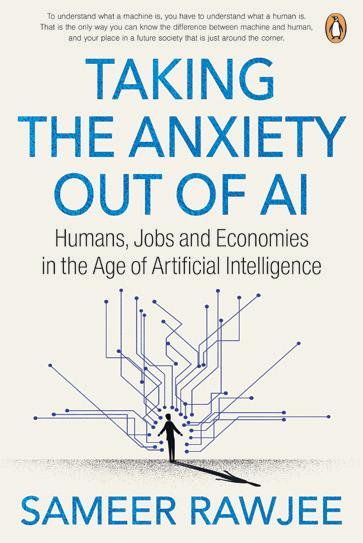
5.

Ping by Andrew Brodsky (R430)
The essential guide for when (and how best) to use virtual communication tools, from video to instant messaging and everything in between. Ping distils Brodsky’s cutting-edge social science research on remote communication tools. He helps us understand: How we can interact most productively and authentically; how we can build relationships at a distance; the rules for making an impact online; and how we can increase inclusion and reduce conflict.

Penguin Random House
All books published by Penguin Random House




